















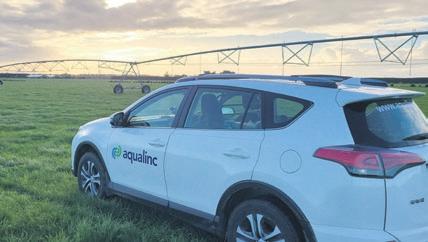

South Island red meat processor
company Dawn Meats.



















South Island red meat processor
company Dawn Meats.
Alliance Group farmer-shareholders have voted in favour of a proposed $270 million joint venture investment by Ireland-based Dawn Meats.
Dawn Meats, one of Europe’s leading red meat processors, will acquire a 65 per cent shareholding in Alliance Group, with farmershareholders retaining a 35 per cent stake.
A total of 2,675 shareholders voted, representing 92,495,558 shares or more than 88% of all shares on issue. Of these, more than 87% voted in favour of the proposal, meeting the threshold required under the Takeovers Code.
Alliance Group chair Mark Wynne said the result demonstrated strong farmer confidence in the company’s future direction.
“Our farmer-shareholders have given a clear mandate for Alliance to move forward in part-
nership with Dawn Meats. This is a vote of trust in our people, our operations and our vision.
“We’re really excited about the potential for this partnership and what the future holds for Alliance and Dawn.
“This essential investment will strengthen our financial position, enhance our operational capability and enable us to capture more value in market for our farmers and the country.
“Importantly, the agreement also preserves farmer ownership, with a continuing 35% shareholding and strong governance rights.”
Wynne said the positive outcome followed a comprehensive two-year process to reset and re-capitalise the business.
“By combining Alliance’s lamb expertise and global reach with Dawn Meats’ strength in beef and market access across Europe and the UK, we unlock significant commercial and operational synergies.
“The future looks much brighter than it did 12 months ago. We’re looking forward to getting down to work.”
Niall Browne, chief executive of Dawn Meats, said they were pleased and excited by the outcome of the vote by Alliance’s farmer-shareholders.
“We now look forward to maximising the potential of the new opportunities this strategic partnership will unlock in the future for both Dawn Meats and Alliance.





When someone dies their trustees or administrators are primarily responsible in ensuring that the directions in the deceased’s Will are carried out in accordance with the legal process.
] Ronald W Angland & Son
First the trustee has to ensure that suitable arrangements are put in place for a funeral including the burial or cremation of the body.
When an estate has an estate worth less than $40,000.00 it may not be necessary to apply for Probate of their Will.
Where that is the case, declarations can be presented to the deceased’s banker who will close any accounts held by the deceased.

Letters of Administration with Will annexed.
When Probate is granted, the trustees should proceed with the realisation of the deceased’s assets expeditiously.
Most trustees work in with the family about the retention of assets and items and assets which the family does not want as usually sold and the proceeds held in trust for distribution to the beneficiaries when all legal formalities have been completed. One of the final tasks is to file tax returns for all income received during the course of administration of the estate.
After six months have elapsed since Probate was granted the trustees have some protection from claims especially if they have advertised in the Public Notices column of the local newspaper for debts owing or claims against the estate.
However, claims under other legislation can be made up to one year from the grant of Probate so most trustees will wait for the year to elapse before distribution.
Probate is the document which is issued by the High Court officially appointing the trustees or administrators of the estate to administer the estate. The trustees have to provide the High Court with evidence that they are, in fact, the persons appointed to be the trustees, the person has died, produce the original Will and undertake to administer the estate lawfully.
Where the deceased has left a Will and but has failed to appoint a trustee or the trustee has predeceased the Will-maker one of the deceased’s next of kin will usually apply to be appointed as administrator of the estate under









There are time limits imposed on estate trustees. It is most unlikely that trustees would make a distribution to beneficiaries before six months have elapsed from the grant of Probate.
One of the most important obligations imposed on trustees is to act impartially among the beneficiaries and when a family is at war, trusteeship can be an onerous obligation.
This article has been prepared by bessie Paterson, a partner at ronald W Angland & Son, Lawyers, 2 Chapman Street, Leeston.
“Dawn Meats has a proven track record of successfully partnering with other businesses and we believe this joint venture with Alliance will assist in further growing and developing what is an excellent New Zealand business with a proud legacy of processing and exporting the highest-quality grass-fed lamb, beef and venison.
Browne said Dawn Meats already has a strong operations network in Ireland, the UK and in the EU.
“Having the ability to now grow in partnership with some of New Zealand’s leading farmers, and create a year-round supply for our customers between the Northern and Southern Hemispheres, is a fantastic opportunity and one our customers are already responding to.
“We believe this partnership will create a dynamic industry competitor with a unique combination of customer relationships, resources, skills, routes to market and industry knowledge, giving both Dawn Meats and Alliance a powerful competitive edge, locally and globally.
Around $200 million of the investment proceeds will be used to reduce Alliance’s short-term working capital facility, with the balance directed toward accelerating the Board’s strategic capital expenditure programme.
Farmer-shareholders will also benefit from distributions of up to $20 million in both the current (FY26) and next financial year (FY27).
In FY26, 45% will be paid as a dividend and 55% as a supply-based rebate.

In FY27, 75% will be paid as a rebate and 25% retained as earnings. Rebate payments will be calculated on a three-year rolling average of supply and capped at the current shareholding.
In addition, up to $25 million will be dis-




Opportunities: Chief executive of Dawn Meats Niall browne says the ability to grow in partnership with some of New Zealand’s leading farmers, and create a year-round supply for customers between the Northern and Southern Hemispheres, is a fantastic opportunity.
tributed as a dividend from the joint venture to the proposed Alliance Investment Co-operative following a stronger than forecast yearend result for Alliance.
“This outcome provides Alliance with a strong foundation for the future,” Wynne said.
“We are now well positioned to thrive alongside a complementary partner like Dawn. Together, we can deliver enduring profitability, significant global opportunities and capture greater value for our farmer-shareholders.”
Alliance was founded in 1948, when a collective of Southland farmers came together to establish Alliance Freezing Company Limited, with the aim of processing and promoting premium-quality meat and associated products to international markets.
The initial processing facility, which remains the largest to this day, was inaugurated in Lorneville in 1960. In 1980, the company underwent a change in ownership structure, transitioning into a co-operative. It currently employs over 4,000 people.









Rural Women New Zealand and Federated Farmers have welcomed the Canterbury Police District’s decision to withdraw its proposed restructure which would have seen several rural police stations closed in favour of centralised hubs.
] by Kent Caddick
The decision followed weeks of strong pushback from farmers and rural residents after Canterbury Police proposed reducing staff in small towns and centralising operations in 24/7 hubs at Rolleston and Rangiora.
RWNZ wrote to both Canterbury District Commander Superintendent Tony Hill and Minister for Rural Communities Mark Patterson expressing deep concern over the proposal to close rural police stations including Amberley, Culverden, Rakaia, and Pleasant Point.
“We warned that removing local stations would risk slower emergency response times, and weaken deterrence against rural crimes such as theft, illegal hunting and trespassing,” RWNZ National President Sandra Matthews said.
She said the decision to withdraw the proposed restructure reflects the strength of rural community feedback and the importance of genuine engagement when decisions directly affect rural safety and wellbeing.
“This is the right outcome for Canterbury’s rural communities, and we commend Police for listening to the genuine concerns of local people,” Matthews said.
“The proposed closures risked undermining the trust, accessibility, and sense of security that come from having a visible local police presence. A lot of rural policing is about relationships that Police build with their communities, which is something that

we don’t think can be imitated by centralised hubs.”
Federated Farmers helped lead the community response, organising public meetings in Culverden and Leeston, lodging formal submissions, and encouraging hundreds of residents to have their say.
Federated Farmers North Canterbury president Bex Green said the decision to halt the restructure was a pragmatic one and a huge relief for rural communities.
“Farming families across Canterbury will be sleeping a little more soundly knowing their local police will stay on the ground, where they belong,” Green said.
“You can’t replace a trusted local police officer who lives in the community with drivein drive-out cops who live an hour away.

“When you live rurally, it matters so much to know you have a local cop who understands the area, knows the people and is part of the community.”
She said the original proposal struck at the heart of rural safety and wellbeing.
“Policing isn’t just about responding to crime, it’s about being visible, connected and part of the fabric of the community. That’s what keeps people safe and builds real trust.”
Green acknowledged Canterbury Police District Commander Tony Hill for listening to the feedback and ultimately making the right call.
“It takes courage to propose bold changes, but it takes real leadership to listen when communities say, ‘this isn’t right for us’.

Relieved: Federated Farmers North Canterbury president bex Green said the decision to halt the restructure was a pragmatic one and a huge relief for rural communities.
“We appreciate that the district commander has heard the message loud and clear and acted on it.”
Federated Farmers rural policing spokesperson Karl Dean, who farms in Canterbury, said the decision is a reminder of the strength of local voices when communities stand together.
“This outcome shows the power of rural Canterbury and farming communities nationwide.
“When something threatens the safety and wellbeing of our families, we stand up and speak out.
“Just because we have fewer people than the big cities doesn’t mean we should ever have to feel less safe or accept a lower standard of care,” Dean said.
Questar with Inatreq active offers a unique mode of action for persistent curative and protective control against all Septoria strains.
Using our patented i-Q4 formulation, it provides near 100% leaf coverage and high flexibility in application, delivering robust, market-leading protection so you can secure your yield and the future of your farm.




] with Todd McClay ] Minister for Agriculture
For almost a decade farmers have been worried that government decisions will harm production, add unreasonable cost and close farms. When you think about it, this is madness.
New Zealand farmers are some of the most carbon efficient and environmentally friendly food producers anywhere in the world.
Consumers everywhere are willing to pay good money for what we produce, and our farmers and our exporters are world best at what they do. Many of the last Labour-Green government’s decisions were harming food production, with little to show.
Labour and the Greens passed laws meaning farmers would need to reduce methane by as much as 47 per cent by 2050, a figure plucked from the air and driven by ideology not evidence or science. To drive this change, they promised a tax on production, a tax on methane or a tax on fertiliser, or as one farmer told me, just more taxes.
Under this Labour-Green policy, predictions of as many as 30 per cent of sheep and beef would have closed, a disastrous outcome for rural New Zealand and for the wider economy.
I campaigned on ending this madness and three weeks ago we delivered on this promise to ensure kiwi farmers have certainty and a future.
Cabinet has agreed on science-based biogenic methane targets for 2050, providing farmers and exporters with a clear pathway to reduce emissions while maintaining pro-
ductivity and trade competitiveness.
The target will be set at a range of 14–24 per cent below 2017 levels by 2050, reflecting the findings of the independent Methane Science Review released in 2024.
We accepted a range of advice and worked closely with industry to agree a practical target that protects food production whilst substantially reducing New Zealand’s farm emissions. This decision delivers a practical, fair pathway that recognises New Zealand agriculture efficiency, protects jobs and production, and upholds our climate commitments.
The Government remains committed to our domestic and international climate change commitments, including net zero by 2050. Agriculture will continue making an important and fair contribution to achieving this reduction but can do so without harming production.
The Government also confirmed:
• a legislated review in 2040 of the biogenic methane target to ensure its alignment with science and against progress of key trading partners;
• no tax on agricultural methane emissions as this would risk closing down farms and send jobs and production overseas. Reductions in methane to meet the tar-
gets will be achieved in partnership and through industry leadership and processor incentives following the lead of companies like Fonterra and Silver Fern Farms;
• investigate a split gas target for all of New Zealand’s future international climate change commitments;
• recognise and protect the importance of food production in New Zealand by better aligning domestic legislation with language in the Paris Agreement.
To back the new target, we’re already investing more than $400 million with industry to speed up the development and roll-out of methane-cutting tools. The first is expected on farm in 2026, with up to 11 available by 2030.
These include innovations like EcoPond, which cuts effluent pond emissions by over 90 percent, alongside advances in genetics, feed and farm management.
Technology has the potential to deliver emissions reductions, while enabling the sector to grow. It’s expected that if 30 per cent of farmers take up the technologies expected to be available before 2030, total agricultural emissions could reduce by between 7 to 14 per cent over the next decade. That’s on top of any reduction in emissions that
‘
by setting sensible targets and backing innovation, farmers remain world leaders in producing high-quality, safe, and sustainable food, while meeting international commitments.
may come from efficiency gains on-farm or changes to farm systems.
It will be up to each farmer, processor, and company to decide how best to meet their own commitments, using the tools and innovations that fit their business.
New Zealand’s primary sector earns nearly $60 billion in export revenue and provides more than one in ten Kiwi jobs. By setting sensible targets and backing innovation, we’re ensuring New Zealand farmers remain world leaders in producing high-quality, safe, and sustainable food, while meeting our international commitments.



As I enjoyed a glass of Pinot Noir, with camembert cheese and honey heated in an air fryer, for lunch, my mind wandered back, and I wondered what I would have been eating when I was younger.
Now days we laugh at the thought of eating roast meat swimming in fat and green vegetables that had all the goodness flushed down the sink after being boiled to death.

Other veges thrown into the roasting pan with the result that it all tasted the same. Well, not exactly that bad, but you get the message.
We as a nation had simple tastes when it came to food, let’s face it, and the methods of food preparation were handed down through generations.
The first revolution was the arrival of microwaves. Aprons bearing the words “got more time for misbehaving, now I’ microwaving” became the rage.
Green veges started to be served crisp, and leftovers were served as though they were cooked in the past few minutes.
This all led to new and adventurous ideas about food preparation.
Yes, we simply grew up and joined Europe and other nations in enjoying food rather than eating it.
There were two sides to this revelation, one being that we suddenly realised that the rest of the world wanted what we were learn-
ing to eat, and two, our processing companies started to cater the rest of the world’s needs.
Frozen carcasses were gone and chilled cuts of meat being airfreighted became normal. Wine has followed the same path with such things as Cold Duck and imported sweet “stuff” being replaced by world contest winning vintages.
Even beer has gone from very basic draught to more craft beers than anyone could ever estimate.
Ah, and don’t forget gin distilling, again we are producing world standard gin and exporting it into the UK from hence it came. Coals to Newcastle and getting away with it. What astounds me is how fast the transformation has happened.
I am also very aware that our marketing folk are very grateful that the producers have moved in the right direction and at a speed that has allowed us to take the world’s gourmets on and pamper their well-funded desires.
Exporters, producers, consumers here and overseas are so much better off thanks to a generation that decided food is to be treated with respect and nurtured rather than dished up.
Nearly 200 Canterbury farmers packed into a Canterbury community hall recently to voice their growing anger and frustration at what they care calling a consent crisis.
] by Kent Caddick
Organised by Federated Farmers, the meeting near Ashburton, drew a standing-roomonly crowd and delivered a message that Government intervention is urgently needed.
“That’s a massive turnout for a meeting we called at short notice. It goes to show how hot this issue is for farmers,” Federated Farmers Mid Canterbury president David Acland said.
“Environment Canterbury (ECan) are putting local farming families under huge pressure with unnecessary cost, uncertainty and red tape just to renew their existing resource consents,” Acland said.
“Farmers will be spending tens if not hundreds of thousands of dollars on a piece of paper that may not be needed once the RMA is rewritten in a few months’ time.
“We need a solution now, not months away, to save those families the unnecessary stress, cost and heartache.”
ECan administers around 20,000 resource consents, with many due to expire over the next 18 months.
A similar situation will happen in other parts of the country, albeit at a smaller scale.
Farmers say those trying to renew consents are being hit with excessive demands and crippling costs.
Acland said at the meeting in the Lagmhor Westerfield Hall, the sense of anger was palpable.
“Frustration and a fair level of emotion was evident in the crowd. There are some significant farming businesses facing real strain over what’s happening.”
He said many farmers are being asked to provide extensive technical data, ecological assessments, and full Overseer remodelling, even when their farm systems haven’t materially changed.
“Some have been given barely two weeks to compile the information or risk their consent being publicly notified, meaning a full hearing process and even greater expense.

“With the initial consent fee, the expense of engaging a consultant for early advice and just making a start on the paperwork, you’re probably looking at $10,000 minimum,” Acland said.
“That’s just to get the ball rolling. Then for more complex consents, like those involving irrigation, costs can easily run into six figures.”
He said the timing is deeply frustrating, given the Government is in the middle of overhauling the Resource Management Act (RMA).
Environment Canterbury Operations Director Brett Aldridge said they are awaiting the details of the proposed resource management reform.
“We know this is causing frustration in

the farming community. We’re working with the sector as we all navigate our way through this,” Aldridge said.
“We have been written to by Ministers asking us to find a pragmatic approach and use discretion when processing consent applications until we have greater clarity on future direction through the resource management reforms, which we understand are due very soon.
“Our intention is to deliver on that. To this end, we’re investigating where we might be able to do this while still operating within the current legal framework, and we’ll work with central government to explore options.
“Clarity and certainty are important here for the rural sector, and for us and the wider community.
Frustrated: It was standing room only in the Lagmhor Westerfield Hall as Canterbury farmers expressed their frustration at a consent process they say is costing them dearly while they await the results of an overhaul of the resource Management Act.
“The best piece of advice I can give farmers who are applying for consents right now is to take advantage of our pre-application service before applying.
“If we discuss your application together, we can better navigate the current situation and work through options,” Aldridge said.
Acland said while it was positive to hear about transitional work already underway as part of the RMA replacement process, farmers are still stuck in limbo until it comes into force.
“But we’ve got this dead ground between now and the new legislation. Consents are expiring now. It’s causing huge stress and uncertainty, and people are holding off investing in the future as a result.”

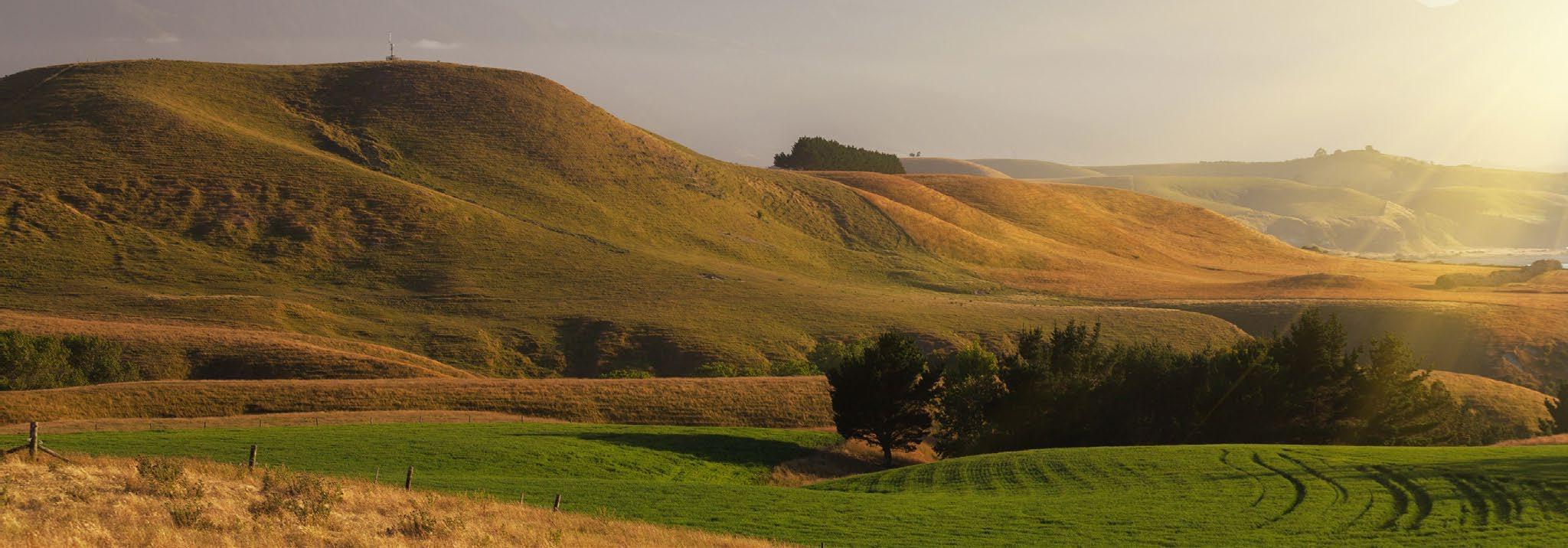



] with Jo Luxton
] Labour spokesperson
] for Agriculture

During a recent visit to Haast with Labour’s Spokesperson for Conservation, Priyanca Radhakrishnan, I saw firsthand the challenges local farmers are grappling with. Wilding pines have been a problem for years, but seeing the impact up close really brought home how much worse the situation has become, especially for those on the ground.
The spread of wilding pine is relentless, and while it may not seem like an ‘emergency’ situation at first glance, the slow creep is very real, and it’s concerning. Pine seeds can travel long distances on the wind, and if we don’t act early, or before they cone, we’re left with a whole raft of problems:
• Loss of productive farmland and water resources, thanks to these thirsty trees
• Severe disruption to ecosystems, as they smother native biodiversity and interfere with soil nutrient cycling
• A heightened risk of wildfires, both in frequency and intensity
• And, a safe haven for pests like deer, which also damage both farms and ecosystems
Despite their rhetoric around being ‘profarmer,’ it was actually National who slashed funding for wilding pine control and scientific research, cutting it to less than half of what it was under Labour.
MPI has a plan in place, and there’s a strong coalition of farmers, iwi, councils, and volunteers ready to help, but without sufficient funding (a shortfall of $13 million this year) all that progress risks unravelling.
While we wait for the results of wilding pine burning trials in Otago, it’s important to remember that managing wilding pine isn’t just about clearing the trees – it’s about the

support we provide afterward to prevent reinvasion.
There are some big questions to consider: Should we restore grasslands or focus on pasture? What’s the best way to rebuild resilient ecosystems? And how will Scion’s research into low-spreading species like Douglas Fir help slow the spread?
A 2023 cost-benefit analysis predicted that if we cut the investment, New Zealand could lose up to $3.8 billion over the next 50 years, with farming, tourism, and forestry taking the hit. With so many factors to consider – different land uses, climates, biodiversity –the solution will never be simple. That’s why it’s clear that we need more investment now, not later.
Under Labour, we recognised the need to take action. That’s why we introduced targeted investment into wilding pines and mammalian predator control. In 2020, we launched the Jobs for Nature programme to support pest and weed control on public, Maori, and private land.
This work contributed to the Predator Free 2050 initiative and helped protect biodiversity across hundreds of thousands of hectares.
We also allocated over $100 million to the National Wilding Conifer Control Programme between 2020 and 2023, scaling up the response. This supported control work across


1.4 million hectares and created jobs in affected regions. We confirmed an additional $10 million in baseline annual funding to continue this effort in priority regions like Canterbury, Otago, and the Mackenzie Basin. And we invested in new biosecurity innovations – things like digital tracking and early pest detection tools – to help mitigate environmental and economic risks.
But under National, funding for the wilding pine programme has been slashed. Last year, they cut the funding from $25 million to just $10 million per year, drastically reducing control operations.

While they promised an additional $2 million for the 2025/26 financial year, it still only brings their total government investment this year to $12 million – not nearly enough to maintain the advantage gained under Labour. So, what’s next? We need a clear, unified strategy to strengthen national policies and ramp up efforts, ensuring farmers don’t lose their livelihoods to this invasive weed.
But the bottom line is this: funding remains the key barrier. Without it, we risk losing the battle against wilding pines – and we simply can’t afford to wait any longer.
The farrowing crate furore is not only a fumble by Animal Welfare Minister Andrew Hoggard, but also reveals the foolishness of the Pork industry.
] with Steve Abel ] Green Party Spokesperson ] for Agriculture
The New Zealand public have a high level of discomfort with mother pigs being confined in steel cages, whether sow stalls or farrowing crates.
Polling from SPCA this week shows that 75% of New Zealanders believe farrowing crates should be phased out now or within five years.
This feeling is consistent over many years of public opinion surveys on animal welfare values. Furthermore the High Court found in 2020 that farrowing crates are unlawful due to them breaching our animal welfare rules. There is no future for this cruel method of pig farming.
The five-year grace period that the industry was given to transition away from farrowing crates (following the High Court ruling) lapses on 18 December.
The Luxon Government has responded to this long diarised but now looming dead-
line by hurriedly bringing a Bill to Parliament which allows the status-quo confinement of mother pigs and piglets to persist for another 10 years.
Even then the new policy will still permit fractionally larger farrowing crates and caging of pigs before and during birthing when they have a profound need to nest build yet aren’t even able to turn around.
The policy goes against advice from the Government’s own expert welfare advisory committee NAWAC which recommended moving to free farrowing (without the use of cages). But, it also fails the basic test for animal welfare in any industry – the social license test.
It is politically untenable to disdain public opinion on basic welfare standards and naive (to put it kindly) on the part of the pork industry to think a future government won’t significantly shorten the timeframe within which caging of pigs will be tolerated.
Already half of New Zealand pig farms don’t use farrowing cages and the shift to free farrowing is a global trend that should be embraced not delayed.

The cost of uncertainty for pig farmers and the risk that they invest in these new slightly larger cages then have them banned by a future government makes the policy shortsighted at best.
It’s embarrassing for Minister Hoggard how blatantly he has done the bidding of the pork industry word-for-word.
After all, he is the minister responsible for Animal Welfare – his priority should be the
pigs: Already half of New Zealand pig farms don’t use farrowing cages and the shift to free farrowing is a global trend that should be embraced not delayed.
welfare of mother pigs and piglets. Hoggard has left the government side of the agriculture committee to clean up his mess by forcing through a dramatically shortened submission process on a Bill that allows our Animal Welfare laws to be broken.
New Zealander’s don’t want to see mother pigs in steel cages and the pork bosses are dreaming if they think this cruel law will last.
Canterbury farming families with a long heritage of farming their land have until November 30 to submit their application in time for this year’s intake for the New Zealand Century Farms and Station awards.
] by Kent Caddick
Families who have farmed their land since 1925 or earlier are eligible to apply for this special acknowledgment of their hard work and perseverance.
NZCFSA Chairperson, Edward Fitzgerald said judging by the number of applications already in, it’s gearing up to be another good year.
He said this year’s event held in May in Lawrence was another huge hit with visiting families, and the committee continues to receive accolades from those who attended.
“The award recipients find the whole process a very rewarding and emotional experience, from the gathering of their farming history through to the coming together of extended family at the awards ceremony.”
Fitzgerald said it is a chance for all generations to reflect on the challenges and achievements over 100+ years and share those memories. “It really is a special evening.”
The committee firmly believe that keeping any farm or station in a family from generation to generation through challenging times is an impressive achievement and deserves to be recognised.
“Farming, whether agricultural, viticultural or horticultural, has been the backbone and prosperity of our country and continues to be so today.
“From breaking in the land by hand and then horse to modern day equipment.

Through wars, depressions, pandemics, droughts and floods, financial cissies and government policies these families have survived and built an amazing legacy. They have stories worth telling, not just from a farming perspective but a cultural and social perspective as well.”
The programme began in 2005 in Lawrence with an aim to capture and preserve family these histories of pioneering families
and their descendants. Eligible families submit narratives of their history, together with copies of related photographs and supporting documents which are then archived at the Alexander Turnbull Library in Wellington, ensuring all records are kept in perpetuity.
A formal dinner in Lawrence each May honours the awardees and their significant achievement of 100 or more years in farming.
Remarkable achievement: The Adams family from Greendale in Canterbury were honoured with a Sesquicentennial (150 years) Award in the 2024 New Zealand Century Farm and Station Awards.
To date, over 650 families from throughout New Zealand have joined this exclusive circle of centenarians and sesqui-centenarians.
Further information including application form can be found on www.centuryfarms.co.nz, emailing info@ centuryfarms.co.nz phoning Anne barnett on 027 788 8135, or Karen roughan on 027 491 8528.





Performance across global markets has been more evenly spread this quarter, with the United States up +8.1%, Australia up +4.7%, and New Zealand +5.5% on the previous quarter.
] Forsyth Barr
In the US, company profits remain solid and the Federal Reserve’s recent rate cut is also seen as reducing the risk of a sharper slow-
Looking at off-farm investments?
down. Europe has risen too, helped by fading trade-war worries, a firmer economic backdrop, and hopes of more government spending.
Interest rates have further to fall as New Zealand economy remains sluggish. New Zealand’s economy continued to struggle over the first half of 2025.

When you are thinking about your investment options, talk to Forsyth Barr
To get personalised investment advice and portfolio management specific to your investing needs, talk to Investment Adviser Andrew Wyllie in confidence on (03) 365 4244 or email andrew.wyllie@forsythbarr.co.nz
Household spending stayed subdued, and construction activity remained soft – both signs of a recovery that has yet to gain real momentum.
However, agriculture and horticulture have been performing well, buoyed by strong global commodity prices.
Fonterra delivered a record NZ$10.16 per kilogram of milk solids in the 2024/25 season, with another NZ$10+ payout on the cards for this season.
Farmers are expected to initially use some of the extra income to reduce debt, but with another strong year expected and a windfall payment of about NZ$300,000 to NZ$400,000 per farm from Fonterra’s consumer business sale, more of that cash is likely to circulate through wider communities.
Tourism has also improved,
with international arrivals back to around 90% of pre-COVID levels.
By contrast, the picture in Auckland and Wellington is more downbeat. Weaker construction activity, softer housing markets, and subdued consumer sentiment have kept growth on the back foot. The housing market is particularly influential—with falling prices tending to sap confidence and suppress spending.
Against this backdrop, interest rates are expected to fall further over the coming months. The Reserve Bank of New Zealand is widely expected to cut the Official Cash Rate by at least another 0.5 percentage points (-50bp) before the end of the year.
That means borrowing costs for mortgages and business loans are likely to ease. With interest rates on cash and term deposits likely to fall further, now could be a good time for savers to review whether other options might offer a better balance between risk and return.
Australasian reporting seasons mixed
Despite the challenging macro backdrop and mixed reporting season, the S&P/NZX 50 Index gained +5.5% over the most recent quarter as confidence builds that the worst is behind us.
There is increasing appeal in New Zea-
land’s defensive profile of high-quality, dividend-paying companies, particularly as interest rates continue to fall.
Australia’s latest reporting season told a similar story of mixed performance across industries. Nonetheless, the S&P/ASX 200 has lifted +4.7% over the quarter.
Don’t chase the hype
It’s tempting to jump on sectors or stocks making headlines. Instead, focus on your own goals, time horizon, and risk tolerance.
A diversified, disciplined approach – reviewed occasionally, not constantly has historically worked better than chasing shortterm hype. Remember: past performance is no guarantee of future results.
If you would like to review your investments or discuss the market outlook in more detail, please get in touch.
This article was prepared as at 30 September 2025 and provides market commentary for the three-month period ending on that date.Andrew Wyllie is an Investment Adviser and Forsyth barr’s Christchurch Manager. He can be contacted regarding portfolio management, fixed interest, or share investments on 0800 367 227 or andrew.wyllie@forsythbarr.co.nz. This column is general in nature, has been prepared in good faith based on information obtained from sources believed to be reliable and accurate, and should not be regarded as financial advice.



Farming has always carried risk: weather, markets, machinery breakdowns, and now, rising compliance and insurance costs. But the farmers who stay ahead aren’t the ones who avoid risk altogether; they’re the ones who plan for it.
with Laura Wood
Accounting
















With summer just around the corner and the new financial year well underway, now is the perfect time to look at how well your business could handle a setback.
The first step in good risk management is knowing your exposure. For many farmers, insurance is the safety net, but it’s not something that should just roll over automatically each year. It’s worth sitting down to review what’s actually covered, and what isn’t.
Rising replacement costs for sheds, vehicles, and equipment mean many policies are now underinsured without anyone realising. Check that your sum insured reflects today’s values, not what things cost five years ago.
The same goes for livestock. High-value breeding stock, in particular, may be worth getting specifically listed if they’d take years to rebuild.
Business interruption cover is another area that often gets overlooked. A major fire, flood, or machinery failure can stop income overnight, but the bills still roll in.
Interruption insurance can bridge that gap, covering lost income while repairs or replacements are underway. It’s worth asking your broker or adviser to model what a few months of lost production would really mean for your cashflow.
Beyond insurance, farmers can strengthen their resilience through sound financial planning. Having a clear cashflow forecast, not just a budget, means you can see how your business might cope if payout prices drop or unexpected costs arise.
A good advisor can help stress test your numbers: what if milk prices fell by $2? What if the tractor needed replacing sooner than planned? Understanding these “what ifs” makes you far better prepared to react quickly when challenges come up.
Another practical step is to keep a small buffer fund. Farming income is seasonal, and overdrafts can disappear fast when the weather turns or significant repairs are needed.
Setting aside even a small amount each month during strong income periods can make a big difference when times get tight. It’s not about saving for the sake of it; it’s about giving yourself breathing room to make better decisions under pressure.
Lastly, make risk planning part of your annual routine, not just something you revisit after a bad season.
A yearly review with your accountant or business advisor is a good way to step back from the day-to-day and take a wider look at the operation. Are your policies current? Are your reserves healthy?
Are you too dependent on one income stream or being too loyal to one buyer? These are the kinds of questions that separate businesses that survive from those that thrive.
Farming will always have its risks, but good planning turns risk into resilience. By reviewing your insurance, keeping your numbers up to date, and setting aside time to plan, you’re not just protecting your farm, you’re protecting your family’s livelihood for years to come.





Fencing jokes aside, few things cause more tension between rural neighbours than boundary disputes, especially when livestock, land value, or long-standing arrangements are involved.
The Fencing Act 1978 (“Act”) provides clear rules around how boundary fences should be constructed, maintained, and paid for. Whether you’re running a sheep station or managing a lifestyle block, it’s essential to understand your legal rights and responsibilities under the Act.
Boundary fences are a shared responsibility between neighbouring landowners. Unless you’ve agreed otherwise, the law requires each party to pay half the cost of building or maintaining a fence on the boundary line.
Before starting any work, you should serve your neighbour with a fencing notice, outlining the type of fence proposed, estimated cost, construction details, and start date. Your neighbour has 21 days to respond –agreeing, objecting, or proposing an alterna-
tive. If they don’t respond, or an agreement can’t be reached, the matter can be resolved through the Disputes Tribunal or the District Court (as applicable).
In rural areas, adequacy of a boundary fence depends on the type of stock. A typical seven or eight-wire post and batten fence is widely accepted. These usually include galvanised wires (with one or two barbed wires allowed), solid timber or metal posts up to five metres apart, and three or more battens between posts. Nine or ten-wire fences or prefabricated netting fences, may be more appropriate for intensive livestock farming. Live fences can also count as boundary fences. Any variation from the usual standard must be obtained in writing.
If a neighbour wants a fence built to a higher standard than what is considered adequate, they must pay the additional cost. Each owner is only responsible for half the cost of an “adequate” fence – one that is reasonable in the circumstances.
Perhaps the most important requirement under the Act is that the fence must be on the legal boundary (with some case law ex-


emptions). Fences built even slightly off the line can create long-term legal issues.
Imagine two neighbours, each owning small rural blocks. A previous landowner erected an eight-wire fence several years ago. Following a recent boundary survey, one neighbour discovers the fence sits two metres inside their property, effectively granting
the other neighbour access to land they do not legally own.
Under the Act, the affected landowner can serve a fencing notice requiring the fence to be relocated to the correct boundary. Unless a registered fencing covenant states otherwise, both parties would be legally required to share the cost of moving the fence. The fact that the fence is well-built and has been in place for tears does not override the requirement that a boundary fence must be positioned on the legal boundary.
A lawful boundary fence also protects landowners under the Impounding Act 1955. If livestock wander onto neighbouring land and cause damage, the injured party can only claim compensation if a sufficient boundary fence was in place. Without one, the law generally doesn’t offer a remedy – even if the damage is extensive.
Fencing might seem simple, but it’s backed by a strong legal framework. By following the Act, serving proper notice, and building to the correct standard and location, you can avoid costly disputes and protect your land – and relationships.











Rural Riders are inviting farmers and growers to ‘top up together’ with summer mountain biking.
As the days grow longer and the weather warms, Rural Riders is gearing up for another summer of cycling in Christchurch.
Founded by Ballance Agri-Nutrients in 2021, the charity now hosts events in 13 rural communities across Aotearoa New Zealand with Christchurch taking part again this summer.
Starting the first weekend of November and running through to Easter 2026, Rural Riders gives farmers a chance to get active, stepping away from day-to-day mahi, and connect with others in a relaxed, low-key setting.
Hamish Clausen, who started Rural Riders while working as a Nutrient Specialist at Ballance Agri-Nutrients in 2021, said opportunities to gather and recharge can be rare in rural life.
He said the events are all about getting farmers and growers off the farm, getting some exercise and promoting health and wellbeing in the agriculture industry.
“We’ve really gained some traction, most of our locations run events weekly and attract between 10 and 30 people or more,” Clausen said.
“We receive great feedback from farmers saying how beneficial they find the regu-
lar rides. I’ll have people come up to me and say, ‘I really needed that tonight’.”
He said the events support physical and mental health, while also fostering social connection, something the World Health Organisation recently highlighted as a major public health issue with impacts comparable to smoking and obesity.
Dylan Hilhorst, a dairy farmer in Taupo, believes the simple act of getting off the farm does wonders.
“It’s the way that clear my mind I find that when I’m able to get off the farm and come along to one of the rides it really helps to take the pressure off,” Hilhorst said.
Clausen said whether you’re a seasoned rider or a first timer, everyone is welcome.
“Rural Riders invites farmers and growers to get off the farm, on a bike, and into a community of likeminded people this summer.”
Rural Riders is supported by Ballance, Rabobank, Beef + Lamb New Zealand and Rural Support.
rural riders host regular events in and around Christchurch from 1 November through to easter 2026. If you’d like to take part search rural riders on Facebook or Instagram to find your local coordinator and ask to get added to the group chat or text list.




What is Bettaflex?
• Bettaflex is a joint support formula to promote healthy joint cartilage function.
• Bettaflex has 400mg (per capsule) of high-grade avian chondroitin, 400mg of glucosamine and 100mg of BioSolve® bioavailable Curcumin (from turmeric).
• Try Bettaflex for 3 months and see for yourself.
How can Bettaflex help?



I regularly am contacted by people with severe osteoarthritis, usually in knees, hips and hands. The question is whether anything other than pain relief or surgery can help. BEST BUY!
$99.95 for 3 bottles free freight or 1 bottle for $36.95 plus $5.99 postage
60 Capsules per Bottle
• Chondroitin and glucosamine are building blocks of cartilage.
• Supplementation with correct levels can support healthy cartilage function and cartilage repair processes.
• New BioSolve® bioavailable curcumin helps joint function while gentle on the stomach.
• Research indicates that chondroitin is highly effective at 800mg daily.
John Arts comments:
“My latest Bettaflex formula includes BioSolve® bioavailable curcumin for faster results. The normal dose is 2 capsules daily but I recommend an initial higher dose for 1-3 bottles to saturate joint tissue.”
John Arts, Founder, Abundant Health
In most cases nutritional therapy can help. I have a client with severe knee osteoarthritis. He gets noticeable relief enabling him to continue his physical lifestyle that was becoming increasingly difficult.
Severe osteoarthritis is characterised by significant deterioration of cartilage, the tissue that cushions the ends of bones. This usually results in bones rubbing directly against each other. This leads to pain, swelling, stiffness, and a reduction in joint mobility. People can often feel a grating sensation as the joint moves.
Severe osteoarthritis requires a wider range of supplements at higher doses. Changing to an anti-inflammatory diet will increase chances of results. Before we commence, we need to ensure compatibility of higher dose supplements with prescription medicines, especially blood thinners.
The key supplements we need are, in order of importance, Chondroitin, Curcumin (from turmeric), Omega 3 Fish oil and Glucosamine. If medications, age and cir-
cumstances allow, we start with a very intensive period usually for 12 weeks. This involves daily doses of Chondroitin 1600mg, 100% water soluble (pepperfree) Curcumin 1200mg, EPA from fish oils 1000mg and Glucosamine 1600mg. This involves 3 different supplements.
Chondroitin sulphate can make a significant difference to joint function. The main benefits come from supporting healthy cartilage secreting cells (chondrocytes) and reducing joint inflammation. I have seen excellent results from this approach. The benefits can be anything from, like my client, noticeable improvements in comfort and mobility through to people cancelling planned surgery. There are only a relatively small group who have no benefits. The key is to work to a personalised plan with regular reviews.
John Arts (Adv.Dip.Nut.Med) is a nutritional medicine practitioner and founder of Abundant Health Ltd. For questions or advice contact John on 0800 423 559 or email john@abundant.co.nz. Join his newsletter at www.abundant.co.nz


The countdown is on to this year’s Canterbury A&P Show which opens its gates on Thursday 13 November.
It’s the second year that the show will run until Saturday, making it easier for families and those from out of town.
Sir David Carter, Chair of the Canterbury A&P Association (CAPA), said livestock will be exhibited on all three days.
“We trialled Saturday last year, and it worked really well for us,” Sir David said.
“It means that if Show Day itself is wet, the day we traditionally used to get the biggest crowds, then there’s also Saturday.
“The other real benefit is a reduction in traffic congestion on Show Day because the Saturday is available.”
This year’s event has special meaning, being conferred the status of Royal A&P Show of New Zealand for the first time since 2010.
Sir David said winning at a Royal Show brings considerable prestige for exhibitors and helps consolidate the Canterbury A&P Show after last year’s uncertainty.
“A Royal Show tends to attract far more entries because of its elevated nature and is just what we need to help our continued rejuvenation.
“It’s the highest honour a regional agricultural and pastoral show can receive in New Zealand.”
It’s already been a real boon with the show attracting 400 trade sites and livestock entries well up on 2024, including a huge increase in dairy cattle to 380, 267 beef cattle entries, and more than 700 sheep.
“Those numbers are very heartening and reflect the collaboration between the Board and the General Committee to inject new life into the show,” Sir David said.
Highlights at this year’s show include:
• The Wool Zone: first introduced two years ago as a showcase for everything produced from wool, but now significantly expanded with its own Wool Marquee and more than 30 trade sites. A fashion parade of wool-based garments will run in the shearing pavilion at lunch time, on both Friday and Saturday
• A Grand Parade on Friday and Saturday
• All youth competitions will be on Saturday morning
• The Wood Chopping will feature a South Island versus New South Wales test match across all three show days
• New for this year is a Cowboy Challenge competition for horse and rider completing a series of tasks, to be held indoors along with a farrier competition in the Riding for the Disabled building at the south end of the main ring
• The return of agricultural heavyweights Ravensdown with a marquee looking onto the main arena and Silver Fern Farms are taking a large ringside site next to the Members Marquee.
The Show is open to the public 9:30am to 4:30pm each day with parking available at Hayton Road, Augustine Drive, and McMahon Road. To avoid congestion, competitors and traders will be arriving earlier.
“Traffic used to be a real bugbear for visitors but the changes we made last year meant things ran much more smoothly and we’re making some further refinements this year,” Sir David said.
organisers are encouraging people to buy tickets online to speed up entry into the grounds, avoiding long queues. Gate sales will be slightly more expensive.








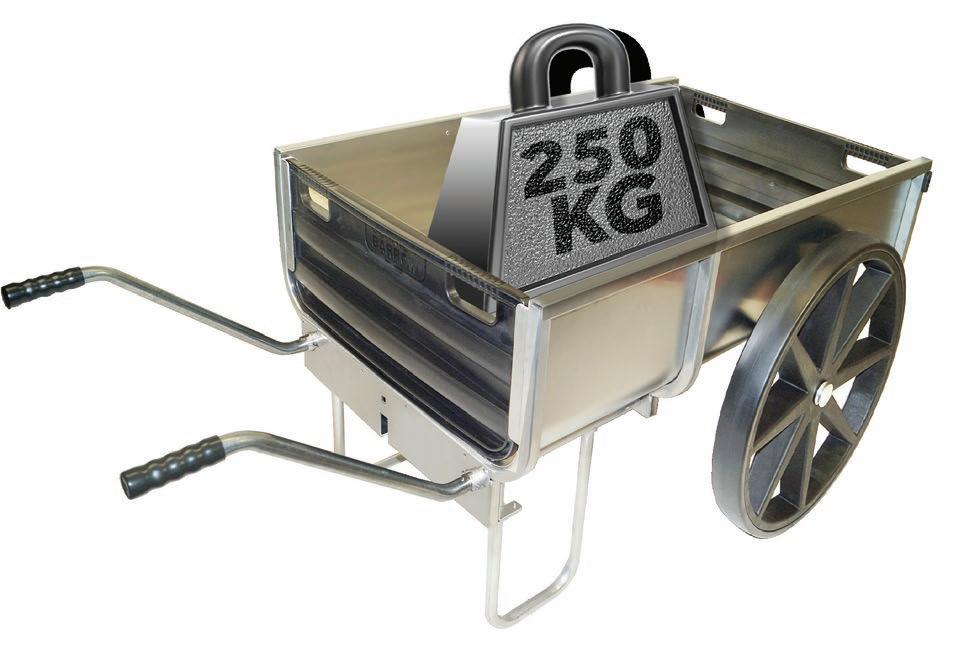




For over 30 years, TechniPharm has been a trusted name in agricultural innovation.
This New Zealand-owned company has been revolutionising farming with state-ofthe-art tools and systems designed to truly make farming ezy.
Why TechniPharm?
If you’re a dairy, beef, or sheep farmer looking to boost efficiency and productivity, TechniPharm is your go-to partner. Their extensive range covers everything from high-tech cattle-handling systems to environmentally friendly effluent storage solutions – all engineered to save you time, labour, and resources.
Award-winning Innovation
TechniPharm’s designs are celebrated both locally and internationally. With patented solutions such as the Dungbuster® automatic yard washer and advanced Animal Handling Systems, you’re guaranteed quality backed by decades of expertise and hands-on farming insight.
Hydraulic cattle handling systems
Experience the future of beef farming with TechniPharm’s hydraulic cattle handling systems, making animal management easier, safer, and more efficient. These innovations help improve animal performance while ensuring farmer safety and comfort.
Sustainable farming solutions
Concerned about nitrogen losses and greenhouse gases?
Explore TechniPharm’s advanced effluent management systems, including their EcoBag® and FlexiTank Round options, both designed to support greener, more sustainable farming practices.
A partner on every farm
TechniPharm works in partnership with farmers, ensuring every product is designed around real-world needs.
CEO Harmen Heesen puts it best: “Our success can be measured by our clients’ success.”
With over 40% of New Zealand dairy farms now using the Dungbuster® automatic yard washing system, the industry has saved thousands of hours of labour, millions of litres of water, and significant effluent storage costs, a true win for both productivity and the environment.
Visit TechniPharm at regional shows and field days
Meet the team and see the latest innovations firsthand at regional agricultural shows around New Zealand.
Experience the technology in action and chat with the experts who share your passion for smarter, more sustainable farming.

over 40% of New Zealand dairy farms are now using TechniParm’s Dungbuster automatic yard washing system, saving thousands of hours of labour, millions of litres of water, and significant effluent storage costs.

Discover more before the event Can’t wait to learn more? visit the all-new website www.technipharm. co.nz for a preview of the full range of solutions or contact the team directly on 0800 80 90 98.








The Canterbury Agricultural and Pastoral Association, established in 1863, is an association under the Agricultural and Pastoral Societies Act 1908.
] by Kent Caddick
The Association hosts an annual Agricultural and Pastoral Show which has grown over the years to become the largest A&P Show in New Zealand.
The decision was taken by the association in 2017 to rebrand the Show, changing its name to the New Zealand Agricultural Show to “ensure its longevity and continued support to the communities at its core for many more years to come”.
Following the establishment of official European settlement by the Canterbury Association in 1850 the province set about establishing itself on a rural economy and thus from its earliest European inception an interest in annually displaying the fruits of the horticultural and agricultural abilities of the area.
Shows were an important part of the rural culture of England and the tradition quickly became a part of early settlement.
The earliest record of any such ‘show’ is 16 December 1852 in Hagley Park. In May 1853 an essentially horticultural display was held at the White Hart Hotel and a show of livestock held in the Market Place (Victoria Square).
In May 1854 a similar show including wool and grain samples was held at the Golden
Fleece Hotel. Similar shows continued on through the 1850s with the formation of the Canterbury Farmers’ Club in 1858.
The first ‘recognised’ agricultural show in Canterbury was held by the fledgling Canterbury Pastoral Association on September 14, 1859 at B. Moorhouse’s station at Shepherd’s Bush, on the north bank of the Rangitata River.
At the conclusion of this show the Canterbury Pastoral Association was officially formed and subscriptions were set at one guinea a year.
As a result of the shows during the 1850s a strong move to form an Agricultural and Pastoral Association was promulgated by businessmen such as Robert Wilkin, George Gould and J T Ford.
So it was in 1862 that the Canterbury Pastoral Association met to inaugurate a show on or near Christchurch and form an organisation with wider aims.
In 1862 the show was held for the first time in Christchurch, in Gresson’s paddock which was fenced with gorse and located in Armagh Street just north of Latimer Square.
Following the success of this venture the A&P Association was formally established with Wilkin as Chair and William Moorhouse, the then Superintendent of the Province as Patron.


Growing: From humble beginnings the Canterbury A&P Association’s New Zealand Agricultural Show is now sited on a 250 acre site at the Canterbury Agricultural Park near Wigram.
This group resolved to purchase a permanent site in Christchurch or its suburban area. The site of the first showgrounds was purchased in 1863, a fourteen acre site in Sydenham, which later became Sydenham Park in 1894.
When the Sydenham site became too small, the Canterbury Agricultural and Pastoral Association bought a 29 acre block at Addington from a Mr Twigger, who donated to the Association another 5 acres. While not all Association members were in favour of the move the main advantage of the new site was its proximity to the main South railway lines.
The move to Addington by the A&P Association was quickly justified as entries and attendance increased and entries came from the North Island and the lower part of the South Island.
Side shows, industrial exhibitions and ma-
chinery and car displays became part of the show increasing the more general public interest.
In 1962 the Canterbury A&P Association celebrated its centennial and continued at the Addington Showgrounds until 1996 when the A&P Association acquired a 250 acre block of land at Wigram from the Christchurch City Council.
The old facilities at Addington had become cramped and dusty and no longer able to cope with the large number of entries and crowds of visitors and the move to Canterbury Agricultural Park in Curletts Road was made in 1997.
The first show at the new site held that year included a range of events, from dog trials to axe men, and exhibits such as ostrich and llama, wines and cheeses, agricultural machinery and services, as well as the more traditional livestock competitions.

Those working in the red meat sector are being encouraged to either enter or nominate someone for one of the eight award categories in the 2026 Beef + Lamb New Zealand Awards.
] by Kent Caddick
There are eight category awards, four of which are people focused, and four are industry focused.
Entries will close on December 8, with judging taking place throughout January and February.
B+LNZ chief executive Alan Thomson said everyone knows someone, or something, making our sector world leading.
“Think about your farm staff, fellow farmers, sector leaders, teachers, innovators, mentors, scientists, technologies, rural champions, and marketers and nominate them for an award.”
Thomson said previous B+LNZ Award category finalists and winners have been overwhelmingly positive about the experience and profile they gained through being associated with the Awards.
“Finalists and winners tell us the Awards have given them a huge confidence boost and, in some cases, the Awards have helped take their business or career to a new level.”
Finalists will be named in March 2026 and the winners announced at a showcase dinner which will be one of the highlights of B+LNZ’s Out the Gate conference being held at Te Pae in Christchurch in May.
Thomson said B+LNZ has taken the opportunity to align its two premier events.
“This gives farmers and agribusiness professionals the opportunity to hear some outstanding speakers and thought leaders at Out the Gate and celebrate the people and technologies that contribute so much to New Zealand’s red meat sector at the B+LNZ Awards Dinner.
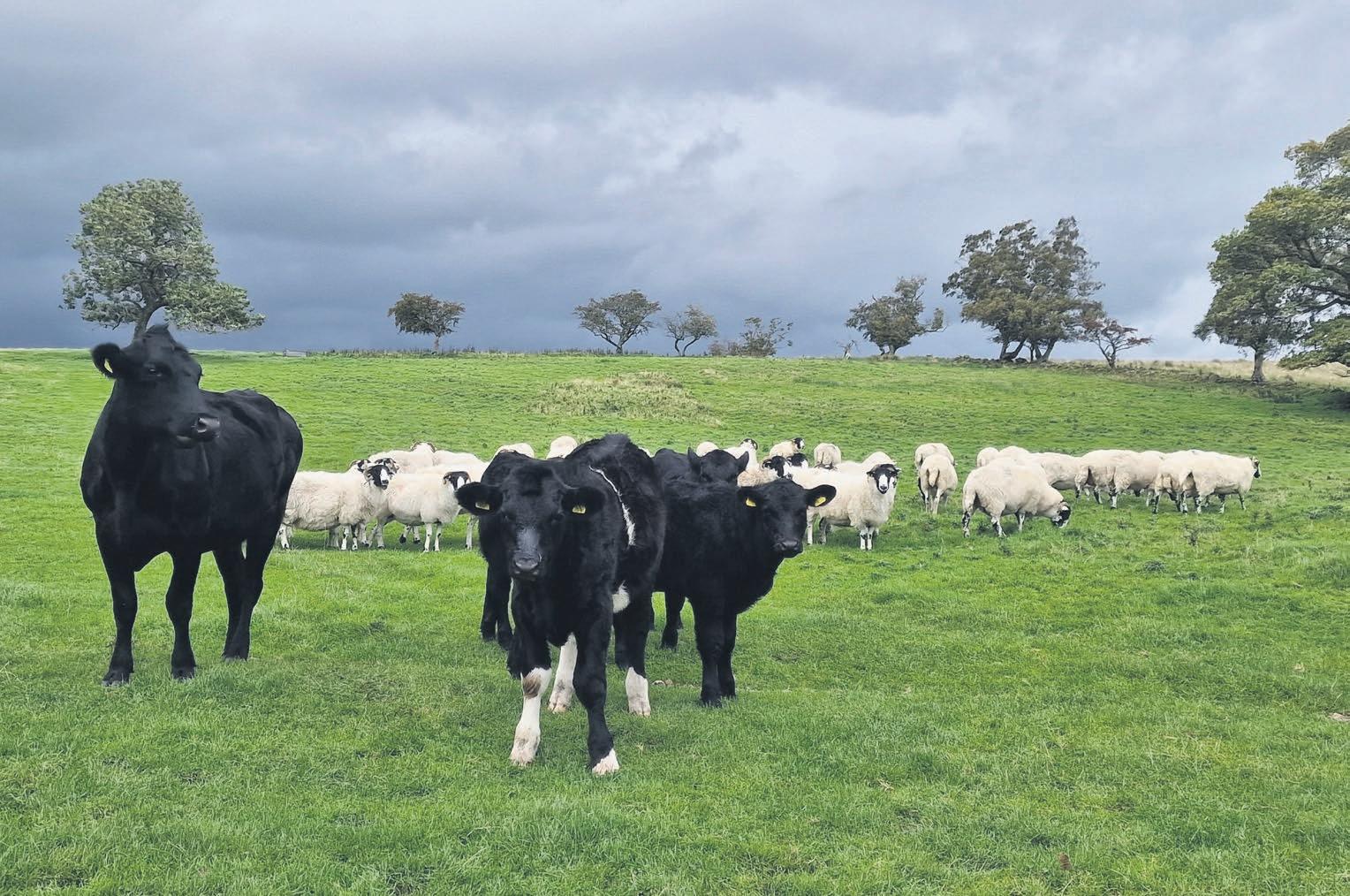
“After successfully navigating a challenging few years, the sheep and beef sector is in good heart, and the Awards give us all the opportunity to celebrate the people and technologies that have supported the sector through challenging times.
“The Awards give us the chance to showcase the leading edge of our sector to peers and the wider public.”
To enter or for more information go to www.beeflambnz.com/awards






At Totalspan Canterbury, we understand what matters most on the land, buildings that work as hard as you do.
] Advertorial supplied by ]
Whether it’s a hay shed, machinery workshop, horse arena, or a multi-use lifestyle structure, our team specialises in designing and delivering farm and lifestyle buildings built to last.
Proudly family-owned and operated by Billy Thompson and his uncle, Tom Fitzgerald, Totalspan Canterbury brings local knowledge, hands-on experience, and trusted service to every project.
Billy, a Licensed Building Practitioner (LBP) with over 20 years in residential, commercial, and rural construction, every build meets the highest standards of quality, safety, and compliance. Billy’s focus on precision and workmanship ensures your investment stands the test of time.
Tom’s background in public service, civil contracting, and operational management keeps each project running smoothly and efficiently, from consent to completion.
Curtis, our Operations Manager, is a third-generation builder with extensive experience across both commercial and residential sectors. His practical leadership

ensures a seamless, on-schedule build process.
Brittany, our Administrator, is passionate about client satisfaction and ensures every customer enjoys a smooth and professional experience from first contact to handover.
Together, our team delivers top-quality steel buildings across the Canterbury region, combining trusted construction expertise with Totalspan’s proven engineering, and a genuine understanding of rural New Zealand life.
Why choose Totalspan Canterbury?
• We provide a full build contract service, ‘from concept to completion’.
• Our building teams are trained and approved by us to provide the best building quality, backed up by our 5-year workmanship guarantee.
• We offer quality steel buildings designed and built for life.
• Locally owned and operated, we are backed by one of New Zealand’s largest private building companies with over 40 years’ experience.
• We stand behind our products with a 25-year Structural Guarantee.
• We offer peace of mind by making sure your building is fully insured by us while under construction.
• We care about you and our staff so your building project will have a specific health and safety plan to ensure workplace safety.
• We offer you great advice, a site visit, design and quote all with no obligation.

At Totalspan Canterbury, we’re proudly locally owned and operated. Our team lives in the region, so we know what works here — and we build to suit local standards and conditions. Call us today to get your project started!







Following years of strong growth and success supporting tradespeople across New Zealand, CBS Co-operative is proud to announce its official expansion into the rural sector.
Article supplied by CBS Co-operative Founded with the mission of empowering its members through collective buying power, CBS has delivered unmatched value to over 1800 members in the building and construction industries.
That same successful model is now being extended to support New Zealand’s farmers, growers, and rural contractors.
“After listening to the needs of our members and seeing the similarities in buying patterns between trades and rural businesses, we knew it was time to launch into the rural sector,” CEO of CBS Co-operative Carl Taylor said.
“The co-op model works because it’s built on transparency, unity, and giving back. That’s something rural New Zealand can absolutely benefit from.”
CBS members gain access to exclusive upfront discounts from more than 30 of New Zealand’s leading merchants including suppliers of fencing, tools, fuel, machinery, safety gear, and more. Profits are returned to members through annual rebates, ensuring the benefits stay where they belong with those who do the hard work.
“With no external shareholders and a true commitment to supporting its community of members, CBS is positioning itself as a compelling alternative to traditional rural supply chains,” Taylor said.
Members not only benefit from cost savings but also gain an ownership stake in the co-operative, granting them a voice in its operations and a share in its profits.
Other benefits include:
• Discounts: Members receive top-tier pricing on a wide array of building supplies.
• Networking: The co-operative hosts free member meet-ups, fostering networking opportunities within the industry.
• Advocacy: Due to its extensive network and industry presence, CBS Co-operative is the preferred source for media outlets covering construction news
Farmers, growers, and rural professionals are encouraged to visit www.cbscoop.co.nz to learn more about membership benefits and how CBS can support their operations.
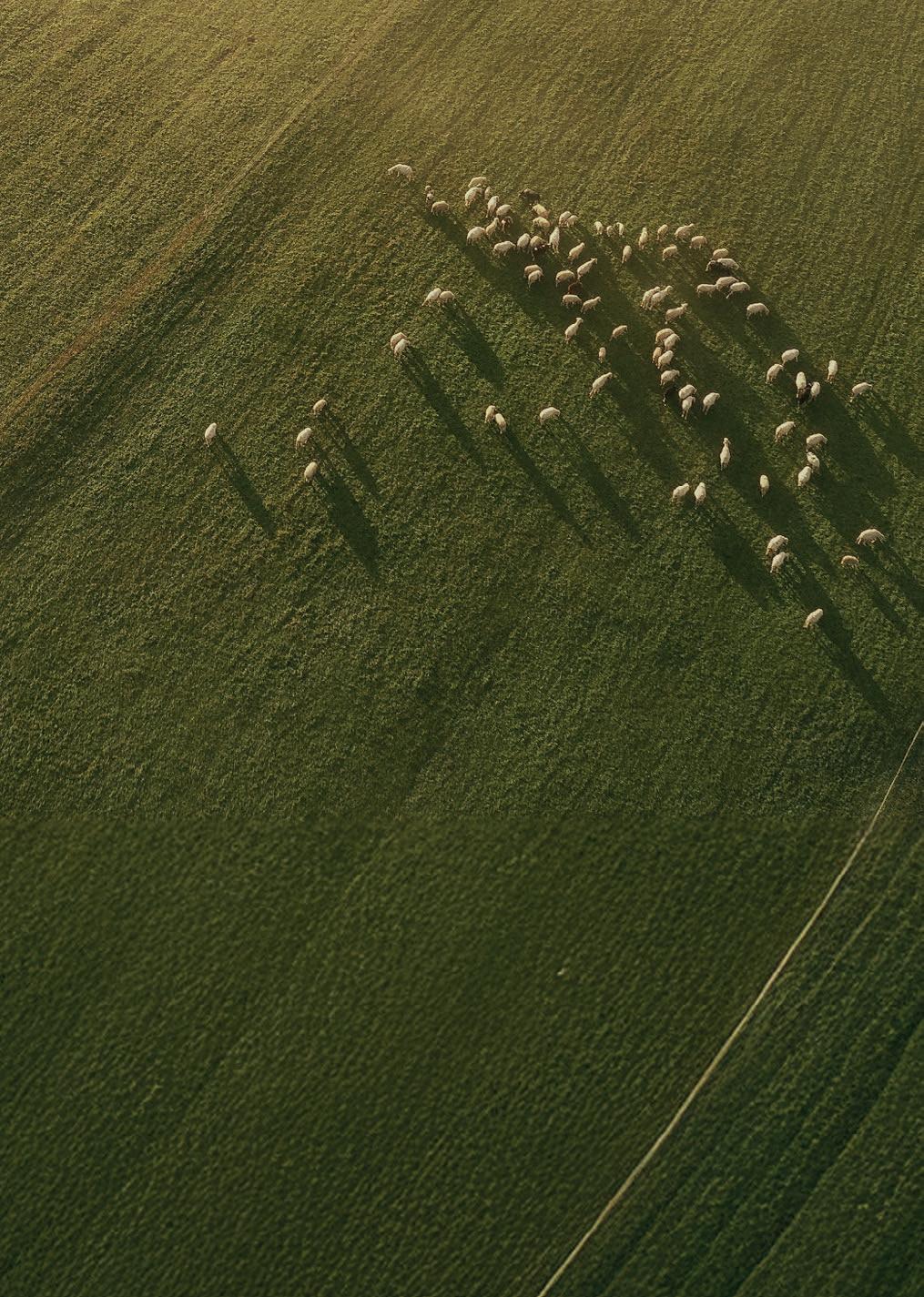

As a CBS Co-op member, you’ll get exclusive, upfront discounts on a wide range of building materials and services from over 30 of New Zealand’s top suppliers. With 1,800+ members across the country, CBS Co-op has the collective buying power to secure Group Home Builder-level pricing - whether you’re building a house, putting up a shed, fencing a paddock, or tackling a full-scale development.
With just $1,000, you can join New Zealand’s only cooperative built for builders, tradies, and farmers. FROM RURAL BUILDS TO






New rules have come into force banning tying up dogs for too long are a big step toward improving the welfare of thousands of dogs.
] by Kent Caddick
That’s according to the New Zealand Veterinary Association Te Pae Kirehe (NZVA). Dr Sally Cory, NZVA Head of Veterinary Services, Companion Animals said the rules, which enable animal inspectors to issue fines where tethering is causing harm, are long-awaited.
“As veterinarians we’re thrilled about these new rules. They represent progress for New Zealand and reinforce our collective responsibility to protect the welfare of dogs,” Cory said.
“And a big thankyou to the SPCA, which has done a fantastic job in leading the charge for this change.”
The Companion Animals Veterinarians Branch of the NZVA has played an important role in development of the regulations, working with the SPCA and the Ministry of Primary Industries to provide expert veterinary input
ensuring that the rules are practical, workable and improve dog welfare.
The rules mean a person must not tether a dog by a rope, line or chain to a fixed point for extended periods where they suffer harm.
And vulnerable dogs, like puppies or pregnant dogs, cannot be tethered at all apart from a few exceptions like visitors or other animals being on someone’s property temporarily.
Dr Cory said there are also some very rare situations where a veterinarian may recommend tethering when it is genuinely the least harmful and safest option.
“Any exemption would need to be welfarebased. So, this might occur during medical or rehabilitation period such as a dog recovering from surgery or injury when requiring tightly controlled movements, and there is no suitable alternative.
“It could also apply for short term behavioural management if the dog poses a risk to


itself, other animals or people and no other safe and alternative containment is immediately available.
“The veterinarian would need to weight the welfare risks of tethering against viable alternatives to ensure the set up met all
needs, including proper shelter, water, space to stand, lie down and move naturally, along with appropriate supervision.
“They would also need to specify a clear, short and temporary duration rather than as a longer term management tool,” Cory said.











Rural New Zealand is being left behind on connectivity, with a new survey showing urgent action is needed from both mobile companies and the Government.
by
Federated Farmers telecommunications
spokesperson Mark Hooper said the Federated Farmers’ 2025 Rural Connectivity Survey, completed by more than 600 farmers in August and September, highlights ongoing issues.
“Many of our members are telling us loud and clear that their mobile coverage is still patchy and unreliable, both on-farm and on provincial highways,” Hooper said.
“It’s very concerning that more than a third of farmers say their mobile coverage has actually worsened over the past year.
“Farmers need telcos to step up urgently and provide solutions that ensure reliable service across the country.”
According to the survey findings, mobile coverage currently averages only 57% of farmland, unchanged since 2022.
While more farmers are connected to 4G and 5G, dropouts remain widespread, causing major issues for everyday operations and health and safety.
“For example, farmers are required to comply with NAIT, a digital livestock recording system, but unreliable connections are obstructing that.
“And what happens if a farmer has an accident on the farm and can’t get a signal to call for emergency help?” Hooper says.
The survey showed internet access is now nearly universal (99%) but continues to frustrate farmers with variable quality, weatherrelated outages, and high costs.
Wireless broadband use has slipped to 44%, while satellite services such as Starlink have jumped to 36% of respondents, up from 19% in 2022.
“Farmers are increasingly reliant on services like Starlink, but simply relying on an overseas provider isn’t in the best interests of the country,” Hooper said.
“While many appreciate the coverage and performance they get from Starlink, that’s not a sustainable solution for New Zealand.
“Nor does it support the many small Kiwi businesses that are working hard to provide internet service solutions for their local communities.”
He said fibre expansion is also now a critical issue.
“Fibre currently reaches only 3% of surveyed rural households, leaving most farmers locked out of the benefits urban people and businesses are enjoying.
“Access to fibre could transform rural connectivity, but right now it’s beyond reach for most farmers.”
Federated Farmers says New Zealand urgently needs a national rural connectivity strategy.
“We need investment in an independent service to give farmers clear information on local

internet providers, the best options for retaining a landline number, and advice on backup power to cover emergencies,” Hooper says.
“It’s crazy that we’re still even talking about rural connectivity problems. I think everyone assumed the service would be so much better by now – but in some cases it’s even got worse.
“Both industry and the Government need to take this really seriously.”
The survey highlights growing concerns as traditional copper landlines disappear. Only 40% of farmers now use a landline, down from 64% in 2022, and more than a third of copper users have already received disconnection notices.
Connection issues: Federated Farmers telecommunications spokesperson Mark Hooper says it’s concerning that more than a third of farmers say their mobile coverage has actually worsened over the past year.
‘It’s crazy that we’re still even talking about rural connectivity problems.
Mark Hooper Telecommunications Spokesperson, Federated Farmers





Log markets have remained stable across New Zealand with that stability being broadly positive for the sector. Indeed, in terms of export log prices, the current levels reflect about the last two-year average, and they have been that way for the last six months.
] with Allan Laurie MNZIF
] Laurie Forestry Ltd
At the current levels forest owners are yielding a good return per hectare. Some have suggested there have been times over the last five years when prices were much higher. I remind them high prices were historically followed rapidly by low prices with markets using the blunt instrument called price to manipulate supply and demand.
Of our key market in China, it is now very clear the demand for NZ logs has its foundations in a furniture and finishing market rather than the construction sector as it has been in the past. This means our wonderful Radiata pine has been recognised across the China manufacturing sector for its superior qualities in finishing componentry.
In this case componentry talks to products like finger joint lumber, edge glue panels, mouldings, and furniture components. These have been a staple export to the US for some time but are also now being used in bulk by Chinese property owners looking to upgrade and refurbish their apartment rather than buy a new one.
This is all very good news for NZ Forest owners who can rely on that market to keep chugging along. Current daily log consumption rates across the China eastern seaboard are consistently running north of 60,000 m3.
Radiata log inventory has continued fall-
ing, as at early October 2.55million m3, down 260,000 m3 on early September levels. The inventory reflects about 40 days of logs in the supply Chain. This is a low number and several years ago could have seen panic buying.
Now the Chaina market is tempered with uncertainty and a subdued sentiment, a reflection historically poor growth numbers and low activity. However, this is very much a watch this space as the Government continue to announce stimulus packages with most commentators suggesting better times ahead.
NZ is now over 80% of all softwood log deliveries to China, totally dominating the market. As I predicted from the outset, the world is finding solutions to President Trump’s tariff stupidities.
Our radiata pine components are finding all sorts of ways to get from China to the US avoiding high tariff countries whilst ensuring US consumers pay for their leaders foley.
The India Radiata pine log market continues at a pace where daily consumption numbers are not part of what is captured or reported.
What we do know is the bonded wood in yards has close to disappeared which means logs are moving out of Kandla port as they are being discharged. This in turn means supply and demand is in balance and the market is generally positive.

The Free Trade Agreement with India is reportedly to hit the headlines in November. Success in achieving a FTA would be very good news for NZ Forest Owners, with the tariff removal on logs very quickly adding two vessels per month to our log trade.
Two vessels per month would mean an annualised increase of close to 1mil cubic metres of logs or about 1500 hectares of mature NZ Radiata pine forests.
Whilst this would be very big potatoes, some have suggested we should continue to draw breath whilst we await the FTA success announcement.
Stable prices at the NZ wharf gate are also the consequence of stable shipping rates. Current levels are in the mid to low $US30’s per m3 for China voyages. There does not seem to be anything in our near future that would upset that apple cart.
Meanwhile the NZ domestic sawmill scene stable and that again is good news for forest owners. Stable demand, equals stable prices, equals certainty, equals efficiency, equals productivity.
Thus, every element across the supply chain should be print-
ing black and for the most part we can say we are at peace with the world. Long may it continue.
As always, please remember the thoroughly important message, it remains, as always, fundamentally important, the only way forward for climate, country and the planet, is to get out there and plant more trees.









Having a well-designed and constructed effluent storage facility will save you time and money.
] Article supplied by DairyNZ
The key is good planning and working with the right people. The benefits of a well-designed storage system include increased flexibility around irrigating, effective utilisation of nutrients and water, reduced risk of effluent non-compliance, and environmental protection.
Lined ponds and above ground tanks are the two options available when choosing an effluent storage system for your farm.
Above ground tanks
Pros: Can usually be installed all year round; Little costs associated with earthworks; Not significantly affected by water table.
Cons: Can be more expensive than lined ponds; May require a building consent from district council; Some size restriction on what is available commercially.
Lined ponds
Pros: Less cost than above ground options; Can be less intrusive on the farm; More accommodating of shape and design; No size restriction.
Cons: Wider range of costs depending on lining options and earthworks needed; Installa-

Choices: Above ground tanks or lined ponds are the two main alternatives for farm based effluent storage.
tion can be weather affected especially for clay lined ponds in some wetter parts of the country.

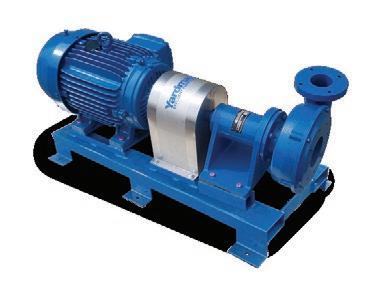



A well designed storage pond is sealed to avoid leakage to groundwater, allows for ongoing operation and maintenance, and is appropriately sized for the volume of effluent produced now and in the foreseeable future, and is compliant with regional and district council and Building Act requirements.
Liners can be formed from compacted clay, concrete or specifically manufactured materials such as polyethylene (PE), polypropylene (PP), or rubber (EPDM).
Selecting the right liner: Compacted clay
Pros: May have suitable clay on site for pond construction.
Cons: Requires soil testing by a professional Requires technical expertise to compact clay correctly to achieve sealing requirement; Cracking can appear when ponds are empty, risk of leaking; Warranties may be more difficult to obtain; Potentially high cost if importing clay from off-site; May require periodic re-lining of the pond after cleaning; Not favoured by all councils, you need to check first.
Pros: Less earthwork preparation required than with clay liners; Flexible to withstand ground movement; Withstands mechanical damage.
Cons: Warranties may be difficult to obtain, engineering expertise is essential; Moderate to high cost.
Pros: Good range of liners available; Good warranties available; Installation allows for gas and ground water dissipation.
Cons: Some variation in quality of synthetics on the market; Moderate to high cost.
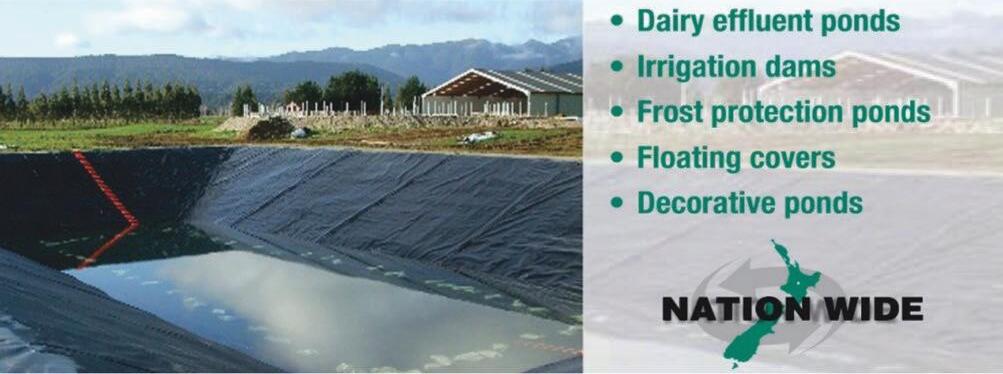





Irrisource is the New Zealand dealership for the premier Chinese pivot brand, Irritech.
While being quite a new company, the directors of Irrisource have over 40 years of combined experience in all areas of irrigation, such as irrigation design, pumping installation and maintenance, pivot design, build and maintenance, solid set irrigation, hard and soft hose irrigation and other types of spray irrigation, as well as a broad knowledge of pipes, parts and components across the irrigation board.
The initiative behind Irrisource is the directors’ passion for supporting New Zealand farming. Irrisource was created to source and provide quality irrigation options that are more affordable.
Irrisource is primarily involved in the supply of Irritech pivot irrigators for new and replacement installations, for the re-piping of
existing pivots (this involves replacing the pipes and joints with new, either standard or poly-lined pipes and joints) and the supply of Irritech pipes, parts and components.
Irrisource can also provide pivot power cables, PVC mainline and spray irrigation options for pivot corners.
Irrisource can put it all into a comprehensive irrigation design and are flexible with the installation of projects depending on the client’s needs, expertise, budget and timeframes.
In order to ensure the quality, consistency and availability of the products Irrisource has chosen to endorse, we went to the factory in China and met with the owners.
The scale of the operation and warehouses was impressive, the place was clean, tidy and well organised, the quality control was ongoing with daily checks on standard products and the product perfor-
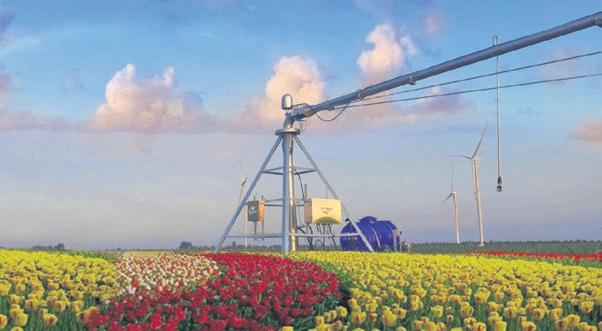
is primarily involved in the supply of Irritech pivot irrigators for new and replacement installations, for the re-piping of existing pivots and the supply of Irritech pipes, parts and components.

mance testing was being carried out on numerous products.
Overall, the two things that impressed us the most were the attention to detail and the innovation, some of which we could see had already been implemented and others in trial stages.
This gave us a great deal of confidence that they would continue to grow, innovate and improve in the years ahead.
Irritech export their pivots to many countries around the world including the


USA and Australia. They pride themselves in using quality products, such as genuine UMC and Komet products (they are registered agents for these products in China). They use honeywell microswitches (USA) and Schneider contactors in their tower boxes.
Under standard conditions the pipes and steel parts have a 10-year warranty, there is a five-year warranty on the sprinklers, three years on the UMC motors and gearboxes and two years on everything else.







We are experiencing a true Canterbury spring, with strong Nor Westers interspersed with regular cold snaps.
] by Nicky Hyslop
] Director B+LNZ
Workloads on farms throughout the region are cranking up with tailing and tractor work getting underway.
A reminder to farmers establishing next winter’s forage crops, please consider factors such as shelter, proximity to waterways and critical source areas, the provision of stand-off areas and headlands.
Winter grazing practices have improved enormously in recent years, but we want to continue to demonstrate that we do our best to protect our natural resources and animal welfare over the winter months, and this starts at crop establishment.
Anecdotally, lambing appears to have gone well and there appears to be a lot of lambs running around, so hopefully we will see some good tailing tallies.
Farmers are expected to be rewarded for their hard work this season as according to Beef + Lamb New Zealand’s recently released New Season Outlook, both product prices and demand remain strong, supported by international market conditions. This is despite tariffs and volatility.
Average farm profit before tax for sheep and beef farmers in Marlborough-Canterbury is expected to rise 22 percent to $145,400 per farm, with finishing breeding farms averaging $161,500.
B+LNZ’s New Season Outlook comes just

weeks after the organisation released its June 30 Stock Number Survey.
While it showed a 2.3 percent decline in ewe numbers in the Northern South Island region to 2.733 million head, the total number of hoggets on farm was up 14.7 percent, leading to an overall increase in total sheep numbers by 3.8 percent to 5.445 million head.
This is likely due to farmers rebuilding stock numbers after last year’s drought and taking advantage of strong product prices.
Total beef cattle numbers increased 9.5 percent across the region to 807,000 head, with breeding cow and heifer num-
bers up 4.6 percent to 227,000 head.
Across the country, the number of breeding ewes continues to decline, down 1.9 percent, and the lamb crop is forecast to be 0.6 percent lower this season – that’s nearly 120,000 head fewer, on top of a 1.5 million reduction in lambs last year which is worrying. This will only exacerbate already tight supply.
Our sheep and beef industry continues to lose land to forestry, and this is creating ongoing concerns about our sector’s longerterm viability.
We cannot double exports if our best farmland has been planted in pine trees for entry
‘
behind the farm gate, drench resistance is a real threat to productivity and profitability, particularly in intensive lamb finishing operations.
into the ETS. While the Government has introduced some restrictions on whole-farm conversions, we’re not sure these will be enough to slow the rate of productive sheep and beef land being lost.
Behind the farm gate, drench resistance is a real threat to productivity and profitability, particularly in intensive lamb finishing operations. I encourage all sheep and beef farmers to get along to a B+LNZ Wormwise workshop to learn how to take a farm system approach to parasite management.
Keep an eye on the events page on b+LNZ’s website for workshop locations and dates.







On the farm, waste is part of the job but leaving it to build up can slow you down and damage your land.
] Advertorial by ] Robson Environmental Services
Robson Environmental Services is the company farmers call for effluent pumping, spreading, and disposal right across Canterbury.
Robson Environmental, which is based in Rakaia and Hornby, is a family business, started by Murray Robson in 1975, and now run by his sons Justin and Keiran. When you deal with them, you’re talking straight to the owners.
Keiran Robson said for more than 50 years we’ve been out there in Canterbury, tackling waste jobs of every size and shape.
“Septic tanks, effluent ponds, grease traps, sumps, spill clean-ups, we’ve seen, and emptied, it all. No site is too remote, no job too messy, and we don’t stop until it’s done right.
“What sets us apart is simple: the right gear, decades of know-how, and a crew that doesn’t muck around. We work to Environment Canterbury standards on every job, because looking after the land and the community matters just as much as getting the job done,” Justin said.
“We’ve got the trucks, tractors, tools, and know-how to deal with big volumes, tricky sites, and tough conditions, keeping paddocks productive and systems running smoothly.”

The work has diversified over the years with Hydro Excavation and Jetting trucks being added to the fleet along with four tractor tankers used for servicing dairy operations.
From one-off callouts to ongoing maintenance programmes, Robson Environmental Services has it covered.
Farm effluent removal and spreading
Managing effluent is a big part of running a farm, and it needs to be handled properly.
Robsons take care of the pumping, removal, and spreading so nutrients go back into the soil where they belong, helping you

grow healthy pasture for your stock. Their heavy-duty tankers are built for the job, and every service is carried out with proof of placement for your ECan records, so it’s safe for your farm and the land around it.
Also, over time, ponds and effluent systems build up with sludge that slows everything down and creates costly problems. From desludging effluent ponds to cleaning out sumps and holding tanks, they’ll get your system back to full capacity.
Septic tank cleaning
Tanks don’t stay clean on their own. Over time, solids, sludge, and waste build up,
From desludging effluent ponds to cleaning out sumps and holding tanks, robson environmental Services will get your system back to full capacity.
cutting capacity and risking damage to your system.
Robsons handle tank cleaning with the right equipment and know-how to clear it out fast and properly.
Environmental compliance
Keeping on top of environmental rules can be a headache, but it’s not something you can afford to ignore.
Robsons take the stress out of compliance by making sure your waste systems, records, and processes line up with industry standards and spreading records via the Tabula tracking system.

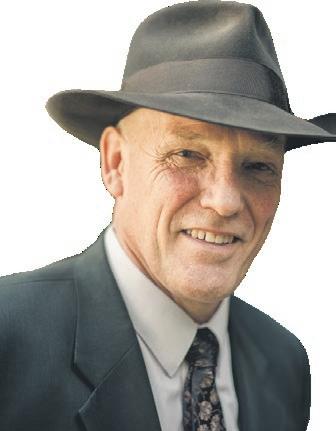



Most farmers I work with remain cautious about their fertiliser spend this season. Budgeting for the current season involves educated guess work and further out the more difficult that becomes.
It’s a real challenge for an industry where decisions made now have impacts years in advance, and it’s not possible to stop production while we wait for better conditions or more certainty.
Geopolitical shifts mean market returns can be volatile, and climatic variability adds a further element of uncertainty.
Ensuring the important things remain in place is essential with soil fertility high on the priority list.
Phosphorus and nitrogen are the two nutrients most money is spent on. Low cadmium rock suitable for superphosphate manufacture is increasingly difficult to source and that is reflected in its steady lift in price over time.
With less natural gas available the price of
] with Peter burton Golden Bay Dolomite NZ’s most loved magnesium.
urea is also affected and lowering inputs negatively impacts pasture growth unless there is an alternative.
The only alternative is nitrogen from another source and nitrogen fixed by clover is the solution available to all pastoral farmers.
An article published in 2003 titled White clover in top 20 essential survival items opens with the sentence, “If there is one thing New Zealand couldn’t do without, it would have to be white clover.”
“…white clover-based pastures underpin most of New Zealand’s milk, meat and wool production in a quiet and unassuming way.”
It was estimated then (2003) that white clover contributed $3 billion annually to the New Zealand economy. In today’s currency that is likely to be in excess of $10billion.
At that time AgResearch led the world in understanding the genetic composition of this “white gold” and $20m annually of clover seed was exported.
In short, there remains the knowledge and ability to maximise the advantages of increasing the amount of clover in our grazed pastures.
Clover in a well manged
sward can supply enough nitrogen to sustain yields of 18 tonne of dry matter per year. Currently intensive dairy pastures seldom exceed 15 tonne DM/ha.
Animal performance significantly lifts when there is a 20% clover content in the sward due to the increased digestibility of clover relative to grasses.
This is particularly the situation from early November onwards when grasses, regardless of management, develop a seed head.
Clover contains usually twice the calcium of grasses, the reason that lambs fatten most quickly on clover dominant pastures.
When combined with the extra energy in the form of soluble sugars accompanied by true, not crude, protein performance gains are further enhanced.
Lactating animals grazing clover dense pasture lose less weight in early lactation and gain condition more rapidly throughout the remainder of the season.
The objection to managing pastures to maximise clover performance is typically that clover plants are subject to damage by pests, usually flea and weevil.
Although pests are always present genuinely healthy plants are minimally affected. The way to ensure that pest pressure is minimised is to lift soil calcium levels and soil pH above that required for grasses.

Feed the need: Clover contains usually twice the calcium of grasses, the reason that lambs fatten most quickly on clover dominant pastures.
est over twenty years ago to promote clover growth in pasture. It contains calcium in the form of lime to lift immediate plant availability.
Soft carbons inoculated with a selected range of beneficial fungi and bacteria ensure that the uptake of nutrient is rapid, and when applied prior to December a significant increase in clover performance can be expected throughout the remainder of the season.
Functional Fertiliser developed CalciZ-
For more information call Peter on 027 495 00-41 or 0800 843 809.















] by Campbell Parker ] DairyNZ Chief Executive
When it comes to biosecurity, we often hear about the end of a response, but it’s the beginning that helps determine our success.
In June, it was reported that New Zealand could be provincially declared free of Mycoplasma bovis (M.bovis) as early as October 2025. A huge milestone and one we should be proud of.
It’s a milestone that could only be achieved through the tough decisions made along the way.
We want to take the experiences and lessons we had through the M.bovis response to prepare for future disease outbreaks.
We recently signed a new operational agreement on Foot and Mouth Disease (FMD) with the Government and sector partners which sets out how the costs of FMD readiness and response activities will be shared.
It also creates legally binding participation of industry in decision-making, ensuring that farmers’ interests, knowledge, and input is heard.
It is a real partnership, not only between the sector and Government but also within sector partners.
As part of the agreement dairy, beef, sheep, pork, and deer farmers are represented, as well as dairy and meat processors. Each has a strong voice at the negotiation table.
As the inaugural Chair of the Foot and Mouth Disease Council it’s something that I’m personally proud to have achieved. And I want to keep that momentum going.
We are reviewing our FMD operational plans and looking at the role the sector plays during a response.
We want to boost our workforce capability and capacity, so we have the right people with the right knowledge in place if we had another serious disease outbreak.
We are also focusing on refining the compensation system.
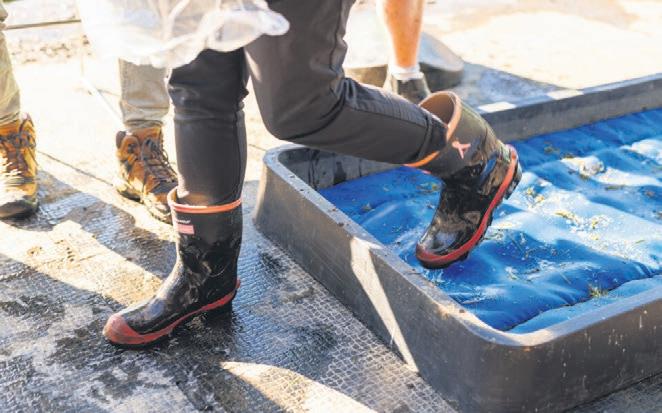
We need a pragmatic and fair system that will provide farmers with the support they need. That includes timely, fair, and consistent compensation that allows farmers to get back to business as fast as possible.
Good biosecurity practices not only provide a degree of protection against potential exotic disease outbreaks, but they can also help to manage endemic diseases like Bovine viral diarrhoea (BVD) and Johne’s disease.
Biosecurity is not just about emergencies, it’s about a consistent and integrated approach to risk reduction, readiness, response, and recovery.
Plan ahead: DairyNZ Chief executive Campbell Parker says getting the planning right when it comes to biosecurity isn’t just important, it’s everything.
Biosecurity can be as simple as:
• Ensuring you have a good biosecurity plan in place on-farm that all staff and visitors are aware of
• Quarantining new animals on arrival for at least seven days and making sure they’re tested and vaccinated for anything that you want to keep out
• Making sure your boundary fences are in good condition and secured.






Two of New Zealand’s key rural data organisations, DairyNZ’s DairyBase and Farm Focus, have formed a new partnership that aims to remove data duplication and help provide more timely, useful benchmarking insights for farmers.
] Article supplied by Farm Focus
Dairy farmers can now connect their Farm Focus account directly with DairyBase, which simplifies data sharing, reduces admin time, and ensures their information contributes to industry-leading benchmarking.
“We know that data duplication can be frustrating for farmers, so this partnership is about making life easier and enables smarter and more timely decisions to be made,” DairyNZ head of economics Mark Storey said.
“Farmers have also told us they want benchmarking to reflect what’s happening now, not what was happening 12 months ago. This is the first step in that journey, as we work on greater partnerships with other key sector organisations.
Electrical problems or maintenance?
Use our unrivalled industrial electrical service for:
• Dairy sheds and irrigation
• Power reticulation
• Effluent control
• Dryers, conveyors and generators
• Switchboards and central supplies

“DairyNZ’s Workplace Productivity Survey 2023 report also showed that farmers spend around one hour per day doing office work, including data entry, which we want to help reduce,” Storey said.
DairyBase, New Zealand’s most comprehensive dairy benchmarking platform, has supported thousands of farmers to understand and compare their farm performance for over 20 years.
Farm Focus brings more than 40 years of experience in farm financial management, delivering tools built by farmers, for farmers.
CEO of Farm Focus Auriga Martin said benchmarking isn’t just numbers, it’s the edge in a tight season.
“Our top farmers use benchmarking to fine-tune performance, spot what’s working, and know when to

pivot. We’re excited to make that process easier than ever through this partnership.”
This season, farmers are encouraged to sign up and connect their accounts early, allowing access to early benchmarks reports.
Looking ahead, the partnership will also help move from static, annual benchmark-
ing to bi-monthly updates starting in the 2026/27 season, giving farmers more relevant, timely insights to support their planning throughout the year.
Learn more at dairynz.co.nz/dairybase or farmfocus.co.nz


Fonterra Co-operative Group has announced it will spend $75 million to expand butter production at its Clandeboye site in South Canterbury.
] by Kent Caddick
The move is part of the next phase of strategic investments by the Co-op signalled in its FY25 Annual Results.
The Co-op plans to invest up to $1 billion over the next three to four years in projects that will generate further value for farmers and drive operational cost efficiencies.
“This investment supports that goal by increasing our production of a high-value product and improving our product mix by adding value to milkfat,” Fonterra CEO Miles Hurrell said.
“The investment will enable construction of a new butter line at Clandeboye, expanding the site’s current butter production capacity by up to 50,000 MT per annum.
“The new butter line will expand the Coop’s capacity to produce a range of butter formats, tailored for both global ingredients customers and professional kitchens.
“The plant will be capable of producing products that meet diverse market requirements, including Halal and Kosher certifications, supporting our growth in key international markets.”
Fonterra Chief Operating Officer Anna
Palairet said the expansion of the Clandeboye site strengthens Fonterra’s network in the South Island by improving flexibility and resilience.
“This investment is part of Fonterra’s broader strategic asset roadmap supporting long-term growth in high-value dairy categories. The expansion will create 16 new jobs at the site, supporting the local economy,” Palairet said.
Construction at the Clandeboye site starts in December 2025, with commissioning scheduled for early 2027 and first product expected off the line in April 2027.

Fonterra has recently spent $64 million at Clandeboye for the conversion of two coal boilers to wood pellets, a step in Fonterra’s commitment to exit coal by 2037. The conversion was completed in August 2025. This is Fonterra’s third investment in the South Island in the past year, following a $75 million spend for an advanced protein hub at Studholme near Waimate to cater to a fastgrowing high protein market for medical and sports nutrition, and another $150 million investment in a new UHT cream plant at Edendale in Southland.




Irrigation doesn’t need to be complicated. Most of us follow the same rhythm each year...
] by Stephen McNally ] Principal Technical Advisor
] IrrigationNZ
Know your soil, crop, and local weather conditions; know your consent limits; make sure the gear is working; turn the water on, check soil moisture, and repeat every week or so through summer. Then, when the season ends, store the gear safely and get ready to do it all again next year.
That simple loop works well, but as irrigation systems have become more flexible and accurate, there’s another level worth thinking about… differential irrigation. It’s not just about soil
Many people work at a good fundamental level, knowing “different soils need different irrigation”, which is true, but it’s only part of the story.
Every property is made up of land management units (LMUs): areas that share a unique combination of characteristics. These include soil type, crop, irrigation-system capacity, management approach, topography, aspect, and even previous treatments such as fertiliser history or soil amendments.
Each of these factors influences how water enters and moves through the soil and how plants respond to it. Taken together, they form a matrix of variables – some fixed, like slope or aspect, and others that change season by season such as crop type or nutri-
ent status. Understanding this mix helps you decide not just how much to irrigate but when and where.
Start by identifying the key differences across your farm. You might already know where the light ground is, or which corner of the soldi set block always dries out first.
Map these as separate units. Then look for links between what you see above ground and what your records or sensors show below it.
A soil-moisture probe in each management unit, or even occasional manual checks, can show how quickly each zone dries out after irrigation or rain. Combine that with what you know about crop demand and weather patterns, and you’ll have a simple but effective framework for differential scheduling.
If your LMUs are widely variable, you may need to reconsider the way your system is set up.
Can it irrigate differently and easily enough to match the needs of each area?
In some instances, the best option will be a variable-rate system, but if you haven’t made that level of investment, think about whether better management of your existing gear can achieve the objectives in the meantime.
If you run a pivot, it may be possible to tar-

Matrix management: Differential irrigation is simply the next step in doing the basics well but recognises that your farm isn’t uniform, it’s a landscape of interacting factors that deserve attention.
get certain areas by adjusting end-gun timing or segment speeds to match soil capacities. Travelling irrigators can change shift distances or application rates. Even simple manual systems can apply different volumes over time by alternating cycle lengths.
The aim isn’t to complicate things to the point you throw up your hands, it’s to target irrigation effort where it matters most. Overwatering one area to meet the needs of another wastes water, energy, and nutrient potential.
No matter how refined your approach be-
comes, the basics still matter. Check pressures and flow rates, cross-check your water-meter data, and make sure staff know what to look for if something seems off. Differential irrigation is simply the next step in doing the basics well. It recognises that your farm isn’t uniform, it’s a landscape of interacting factors that deserve attention. By managing each land-management unit according to its unique mix of soil, crop, and environment, you’ll irrigate more efficiently, reduce risk, and get a more consistent result across the whole property.

















] by olivia Cranney ] Aqualinc


After low groundwater levels at the start of the last irrigation season, Canterbury’s groundwater systems have bounced back strongly for the start of the 2025-26 season.
of groundwater levels started from a higher baseline.
Groundwater levels prior to the start of this irrigation season in mid-Canterbury (1 September 2025) were among the highest observed over the past 20 years, based on various ECan monitoring bores of depths typically used for irrigation.
This marks an impressive rebound from the low winter and summer groundwater levels of 2024.
These current high-water levels are thanks to a significant amount of aquifer recharge that has occurred over the previous autumn and early winter, including the effect of the rainfall event that caused widespread flooding in the Selwyn District in early May.
Aquifer recharge is the process by which rainfall on the land surface and river seepage replenish groundwater stored in the underlying aquifers.
Across the Canterbury Plains, recharge is largely driven by rainfall and alpine river flows from preceding seasons. Monthly rainfall totals during the 2024–25 summer and autumn were well above average, providing a major boost to groundwater storage going into this irrigation season.
The higher summer rainfall meant that abstraction was lower, and the winter recovery





Adequate aquifer recharge is essential to balance groundwater abstraction and maintain reliable water supplies and water allocation rules are designed to ensure that this balance is maintained.
While groundwater levels are expected to fluctuate between years, a decline yearon-year can reduce bore yields and affect ability to access consented abstraction volumes, as well as having effects on groundwater-dependent ecosystems such as lowland streams.
Water use within sustainable limits helps ensure that groundwater remains a dependable resource for the ecosystems, communities and businesses that depend on it in future years.
In Canterbury, some resource consents to take groundwater are subject to adaptive management conditions: an assessment of the groundwater levels before the irrigation season which influences how much water can be taken under these consents over the summer.
If groundwater levels in designated monitoring bores are below specified thresholds in spring, a consent-holder may have their allocation reduced over the following irrigation season.



While surface water users are used to managing around restrictions when river flows are low, it is a relatively uncommon situation for groundwater users to be restricted in this way. The restrictions can be severe: if groundwater levels are very low, there is a risk that no allocation at all will be available.
Based on current monitoring, most adaptive management groundwater consents are unlikely to face restrictions to their water supplies this irrigation season – welcome news for groundwater users, as those farming will know well that any reduction in water alloca-
Aquifer recharge: Good news for Canterbury irrigators as data shows groundwater systems across the region have bounced back strongly for the start of the 2025-26 season.
tion for a season may have a substantial impact on farm management and productivity.
Although aquifer levels are healthy heading into summer, this is not a time to become complacent. Conditions can change quickly, and careful water management remains essential to maintain both the physical availability of groundwater and compliance with consented volume limits.
In the longer term, increased climate variability may mean that more groundwater users will need to be subject to adaptive limits in order to manage the resource sustainably.












ROIs of 50 to 60% aren’t too shabby. That’s what POD-LOCK, a pod-protecting sealer, has been delivering.
]
Advertorial supplied by UPL NZ Ltd
The unique latex polymer blend, which acts like a glue along pod’s vulnerable seams, helps keep the seeds in the pod while not impacting senescence, maturity or seed quality.
High value, small seed crops can be very profitable but are also vulnerable. Wind, heat, and even harvest itself can result in shedding (also known as shattering). This means seed ends up on the ground. 1020% losses are common, in extreme cases it can be up to 70%.
Aside from boosting profits, there are knock-on advantages if pod shattering can be reduced. Pieter Van Der Westhuizen, UPL NZ Ltd Adjuvant Lead, says POD-LOCK helps deliver cleaner paddocks post-harvest with fewer volunteer plants germinating from lost seed.
“You don’t have the potential seed burden that needs to be sorted out next season, which can be a saving in itself.”
He says fewer seeds on the ground may also make the crop less attractive to birds.
“That’s anecdotal, from local growers, but it certainly makes sense.”
Pieter recommends getting in early with POD-LOCK applications, before seed pods begin opening. Applications can be repeat-
ed multiple times without compromising the crop or interfering with harvest times.
“Used in conjunction with desiccants, POD-LOCK is a useful tool in better coordinating harvesting around weather events, without compromising yield.”
Small seed crops are particularly susceptible to seed loss through shedding.
“In Mid Canterbury there’s often rain followed by dry heat. That’s when shedding/ shattering can become a real problem.
POD-LOCK is a good fit for growers in this area. It takes away some of the stress and uncertainty around harvest time, as much as that is possible.”
He says with small seed crops for export markets, especially, there are a lot of inputs, sprays, resources, and time going into the crops.
“You don’t want to lose a single seed pod, if you can help it.”
Van Der Westhuizen says trials in the UK have shown a 200-500 kg/ha seed saving when the product is used.
“When you’re looking at a crop yielding 4 tonne/ha that’s pretty significant. With POD-LOCK you just don’t get those big seed losses.”
POD-LOCK can be applied between BBCH 80 (when pods are still green and bendy)

through to BBCH 89 (when pods are ripe and seeds have hardened). It can be mixed with a range of commonly used desiccants.
POD-LOCK has no residue limit and is being broken down naturally over time by weathering and sunlight.
Pieter says the product is effective for about a month, although some UK field trials show efficacy for up to 8 weeks after application. He recommends re-spraying if heavy rain occurs. POD-LOCK should be applied in 150-300 L/ha, with 300 L/ha water volume recommended for use on dense crops.
The pod sealant does not have to cov-
PoD-LoCK pod sealer prevents small seed crops from shattering, significantly reducing seed loss ensuring small seed growers don’t miss out.
er the whole pod to be effective and does not translocate within the plant but sticks where it lands.
Immediately after application, the sprayer must be rinsed thoroughly with water. Then add All Clear® tank cleaner to ensure POD-LOCK is removed from the sides of the tank, pump and spray lines and spray nozzles.
Talk to your local technical representative for more details on using POD-LOCK – the convenient, effective way to maximise the value of your valuable small seed crops – or contact Pieter Van Der Westhuizen from UPL NZ at 021 392 740.




AgNova Technologies NZ Ltd is the distributor for MESH®, which is a new generation polymer-based material designed to reduce pod shatter and seed loss.
]
Advertorial supplied by AgNova MESH dramatically reduces the losses from pod shatter before and during harvest and also helps with reducing volunteer pressure in following crops.
Developed by De Sangosse UK, MESH is well-established and a market leader there for many years already.
“We are proud to bring this innovation to New Zealand cropping farmers”, says Mike Goodwin, South Island Area Sales Manager for AgNova NZ. What is Mesh?
It is a unique polymer blend, with a spreading system to give retention, spreading and coverage. Mesh ‘tacks’ and protects the pod seam, reducing its natural tendency to split and allowing the pod to expand, contract and mature normally.
Mesh works by “stapling” or tacking the pod suture line (seam) preventing it from opening or cracking, thereby preventing seed losses. As MESH dries, it produces a honeycomb structure (mesh), which develops intercon-
necting bonds and forms a continuous structure.
Mesh has some key advantages over current products used in the New Zealand market, because of its unique make-up. It can be applied from Growth Stage 79, approximately 8 weeks prior to harvest.
The best timing is when pods are light green, still pliable and may be bent into a V shape without splitting, this is generally GS 80-82 in oil seed rape.
Trial work overseas and in NZ has shown that this early application gives the best return on investment as Mesh retains pod integrity from the earliest time where seed loss can occur, right up to harvest.
The other option is to apply MESH with your crop desiccant product, approximately 2-3 weeks before harvest. MESH is compatible with most glyphosate and diquat type products which may be used for desiccation.
Used at this timing, MESH will reduce in-field losses due to physical
crop movement and pod expansion and contraction.
MESH does not slow down desiccation and has no adverse effect on maturity or quality of the seed produced. MESH effectively reduces pre-harvest losses caused by ‘normal’ conditions.
Use rate: MESH is used at 1 L per hectare in 100 to 150 L of water. Using the lower water volume will allow for more hectares to be sprayed around these key harvest times.
Once dried on the crop, this is the only application needed, as MESH has excellent rainfastness characteristics compared with other products.
MESH is registered for use in oilseed rape, other brassica & vegetable seed crops, and peas & beans.
Key Benefits: Rainfast / Reduces both crop loss and post-harvest seed contamination / Long lasting / More hectares sprayed per tank load / Cost effective.
Contact: Mike Goodwin, AgNova NZ, phone: 022 517 7757 or email: mikeg@agnova.co.nz

once dried on the crop, MeSH is the only application needed, as it has excellent rainfastness characteristics compared with other products.

Contact the AgNova Technologies NZ Ltd team for more information:
AgNova Technologies info@agnova.co.nz orders@agnova.co.nz 0800 500 599
David Lingan North Island Sales davidl@agnova.co.nz 022 555 7640
Mike Goodwin South Island Sales mikeg@agnova.co.nz 022 517 7757
Mesh® is a unique polymer blend which reduces pod shatter and seed loss before and during harvest in canola, other brassica seed crops, peas and beans.
Mesh tacks and protects the pod seam, reducing its natural tendency to split and allowing the pod to expand, contract and mature normally.
Mesh can be applied anytime from approximately 8 weeks before harvest and protect right through.
Mesh dramatically reduces the losses from pod shatter before and during harvest and effectively reduces preharvest losses caused by ‘normal’ conditions.
David Chamberlin Country Manager davidc@agnova.co.nz 021 966 945



The big news across the wider agricultural sector has been the Government’s mid-October announcement that agricultural emissions will not be priced, and that methane targets have been revised to reflect the science of no additional warming. This announcement was welcomed by the deer industry.
“For deer farmers and the wider pastoral sector, the threat of emissions pricing has long cast a shadow over what costs farmers face in the future,” DINZ CEO Rhys Griffiths said.
“This announcement brings clarity and stability, allowing us to focus on what we do best: producing high-quality, sustainable food for global markets.”
New Zealand Deer Farmers’ Association Chair Mark McCoard said while the announcement is good news and allows our farmers to focus on farming, NZDFA remains committed to advocating for deer farming to compete on a fair and level playing field.
“We remain watchful surrounding the implementation of policies that may compromise this position. Deer are a unique animal to farm and often don’t fit within a one-sizefits-all approach.”
In our markets, Europe’s game season continues as the northern hemisphere heads into the cooler months. DINZ CEO Rhys Griffiths recently returned from a market visit to
the traditional market for New Zealand venison.
During his visit, he visited five countries, met with several in-market partners, and attended the Anuga trade show – the largest food and beverage show of its kind.
“My impression of Europe is a lot more nuanced now,” Griffiths said.
“It really is a market of two sides, with one side in that traditional commodity space, yes, but the other in a more growth-oriented, value-added space. And it’s that side of the market that is really exciting.
“From micro-economies like London, where food service is still going strong, to some great work going on in the Nordic states, to a growing appetite to feature venison year-round instead of relying on the traditional game season, all these represent significant opportunity for getting better value for New Zealand venison in the European market.”
In North America, the North American Re-
tail Accelerator programme continues after a strong first year. New Zealand venison is finding its way into more brick-and-mortar supermarket chains and retail outlets, as well as an expanded online presence on sites such as Instacart and Costco.com.
While the initial 10% tariff was managed without too much concern, it is still too early to gauge the full effects of the additional 5% placed on New Zealand exports to the United States. It remains a situation to watch closely, but for now the programme’s momentum continues.
DINZ is continuing to work closely with the Government to move proposed velvet export licensing reforms forward. Ongoing discussions are happening with MPI, the Trade Minister, and other MPs to build support. A routine public consultation will take place as part of Parliament considering action.
The motivation behind exploring the proposed reforms is to introduce some measures and standards for ensuring a fair,
trusted, and competitive velvet sector for all participants.
The Horticultural Export Authority is being consulted to manage the licensing system, given its experience with other export sectors. Before export licensing can proceed, both farmers and exporters will get to vote.
At least 60% support from each group will be needed. If everything goes to plan, the goal is to launch export licensing for velvet ahead of the 2026/27 season, which is an admittedly ambitious timeline.
As of writing, it is still too early for much of an idea on velvet prices, but signs are it could be a complex season as market demand shifts from a plateauing South Korea to a growing China.
This will bring a subtle degree of change and added complexities. For a deeper explanation of the current market situation for both venison and velvet, head on over to deernz. org and check out the recorded markets update webinar in the Our Stories section.













| Family | Wills
| Estates | EPAs | Rural
| Traffic | Employment
Leeston (03) 324 3033
Email: lawyers@anglands.co.nz | www.anglands.co.nz Solicitors of Selwyn since 1965



A new update to the Case IH Optum tractor range is designed to make life easier for farming businesses.
A new three-metre centre set-up for the Optum tractor range is aimed at New Zealand growers operating under Controlled Traffic Farming (CTF) practices, with the new set-up allowing for the tractors to seamlessly integrate into fixed tramline systems, helping reduce soil compaction, improve water infiltration, and enhance long-term productivity with full factory warranty support.
Case IH Medium Tractor Product Manager for Australia and New Zealand Seamus McCarthy said the Optum range already delivers outstanding horsepower and operator comfort, and now with the three-metre centre option, it’s even more versatile.
“It’s a smart solution for growers
who need to travel between bed spacings with accuracy and consistency,” McCarthy said.
Case IH unveiled its new 3-metre centre set-up for the Optum tractor range at Henty Machinery Field Days in Australia recently.
“This factory-supported setup allows Optum tractors to seamlessly integrate into fixed tramline systems, helping reduce soil compaction and improves water infiltration.”
McCarthy said it’s a move that reflects Case IH’s ongoing commitment to delivering practical, high-performance solutions for broadacre and horticulture operations.
“The set-up was introduced in response to strong demand from growers looking to align their machinery with CTF practices.
“We’ve seen a real shift in the market toward precision farming systems, particularly in cotton and horticulture.
“This set-up will be fully covered by warranty and allows customers to operate the Optum range with peace of mind and without compromising on power or technology.
“The Optum range already delivers outstanding horsepower and operator comfort, and now with the 3-metre centre option, it’s even more versatile.
“It’s a smart solution for growers who need to travel between bed spacings with accuracy and consistency,” McCarthy said.
The Optum range offers up to 340 horsepower, a spacious and ergonomic cab, and advanced technology integration including FieldOps™ for remote monitoring and machine management.

























































